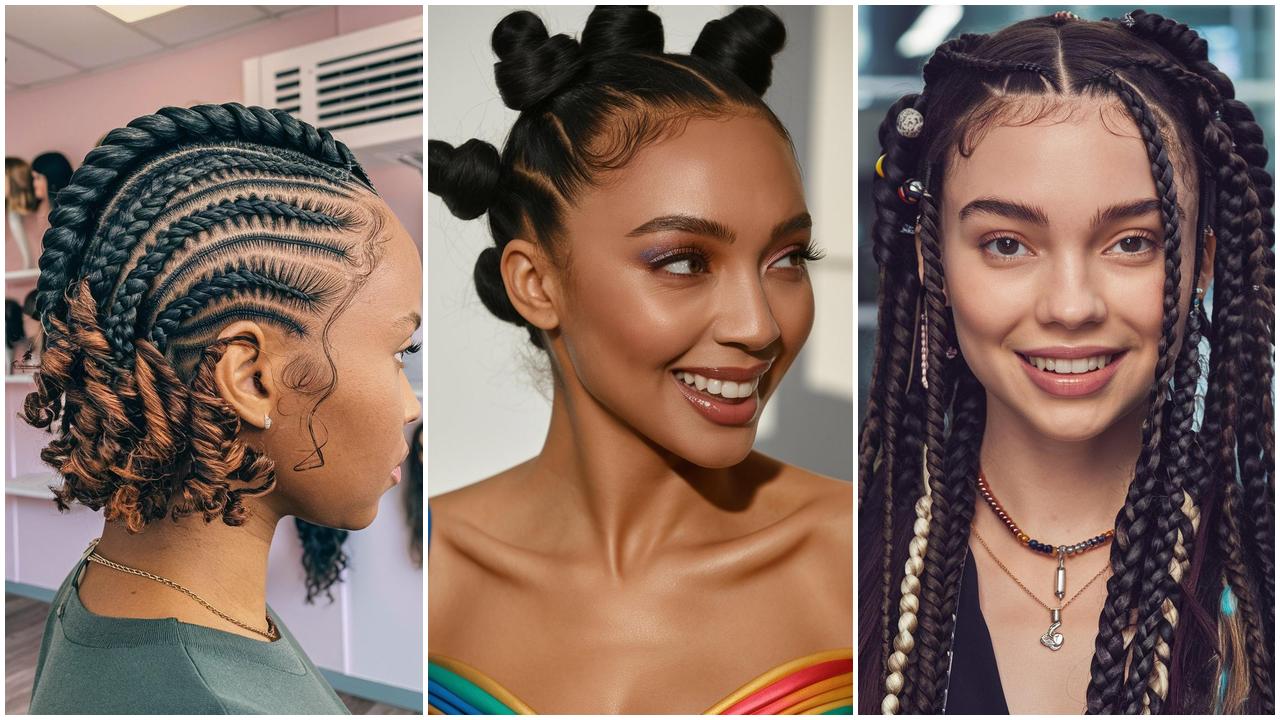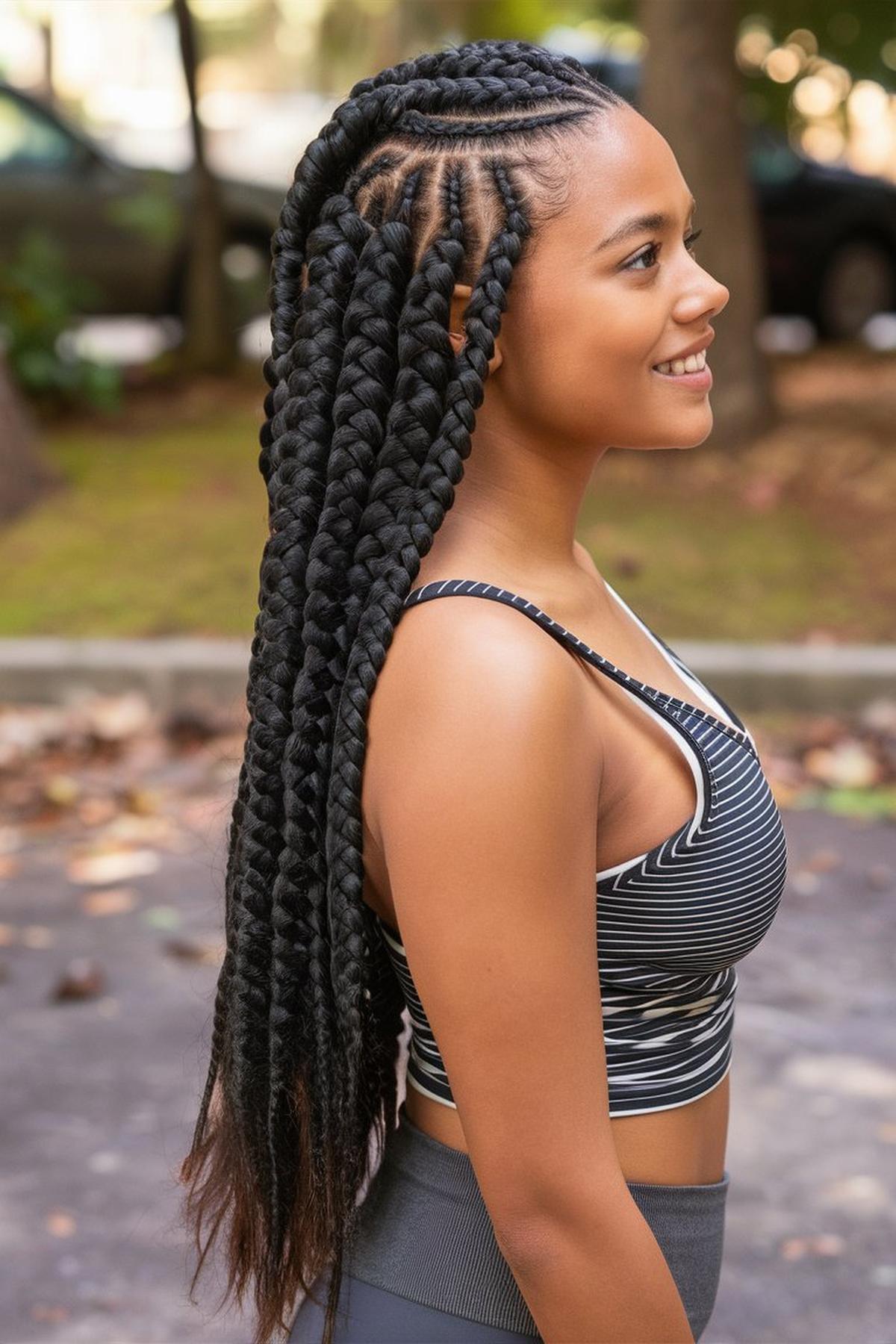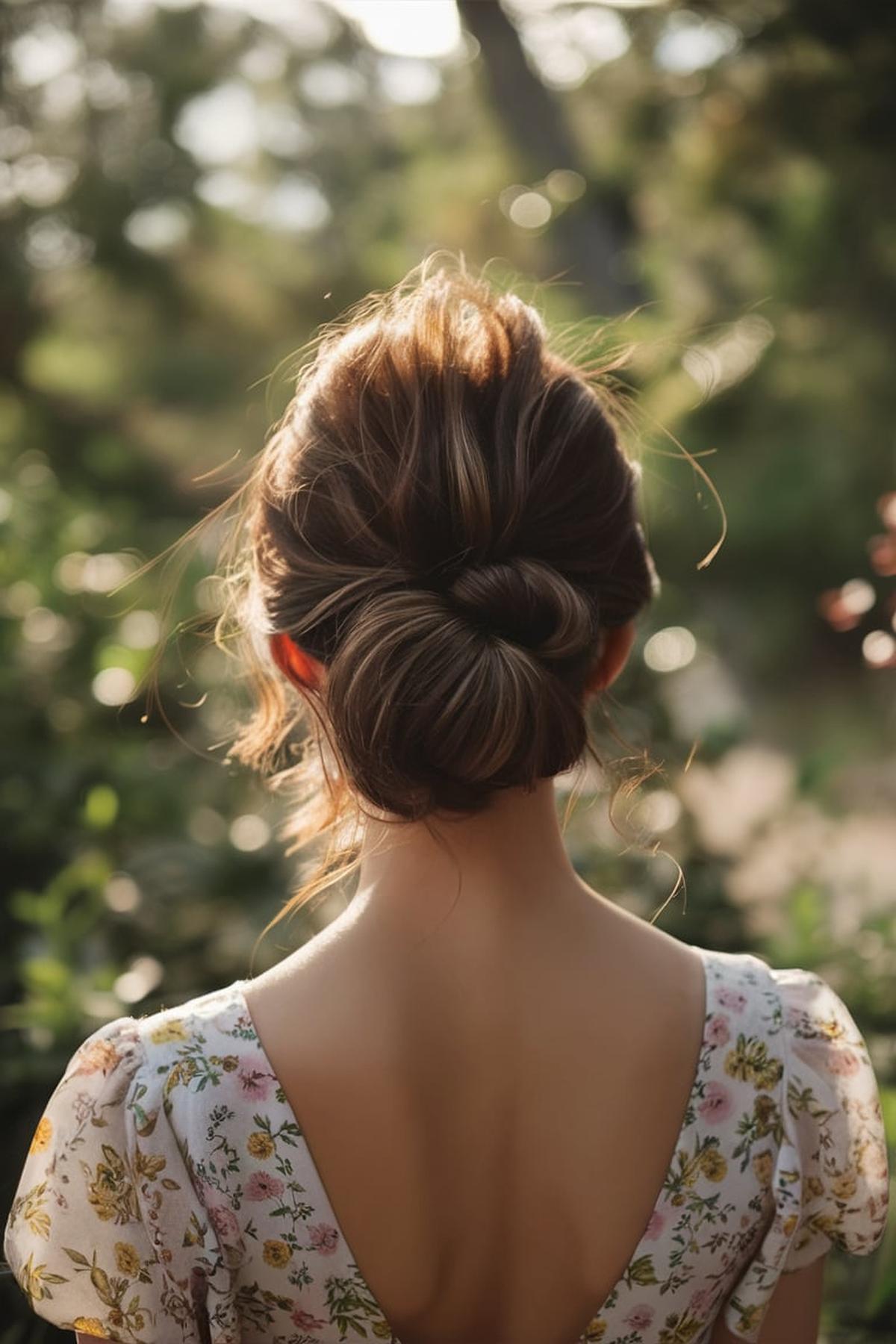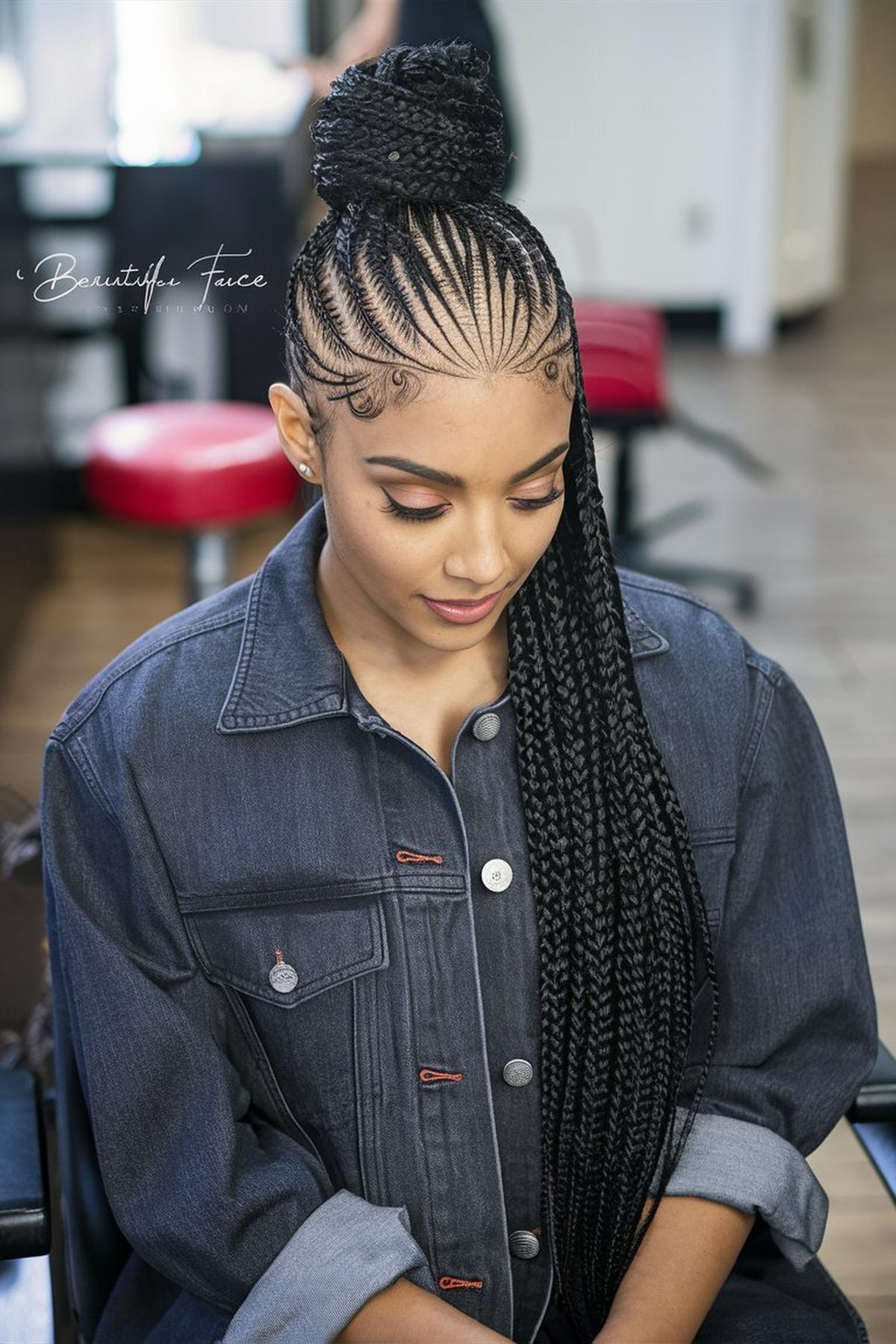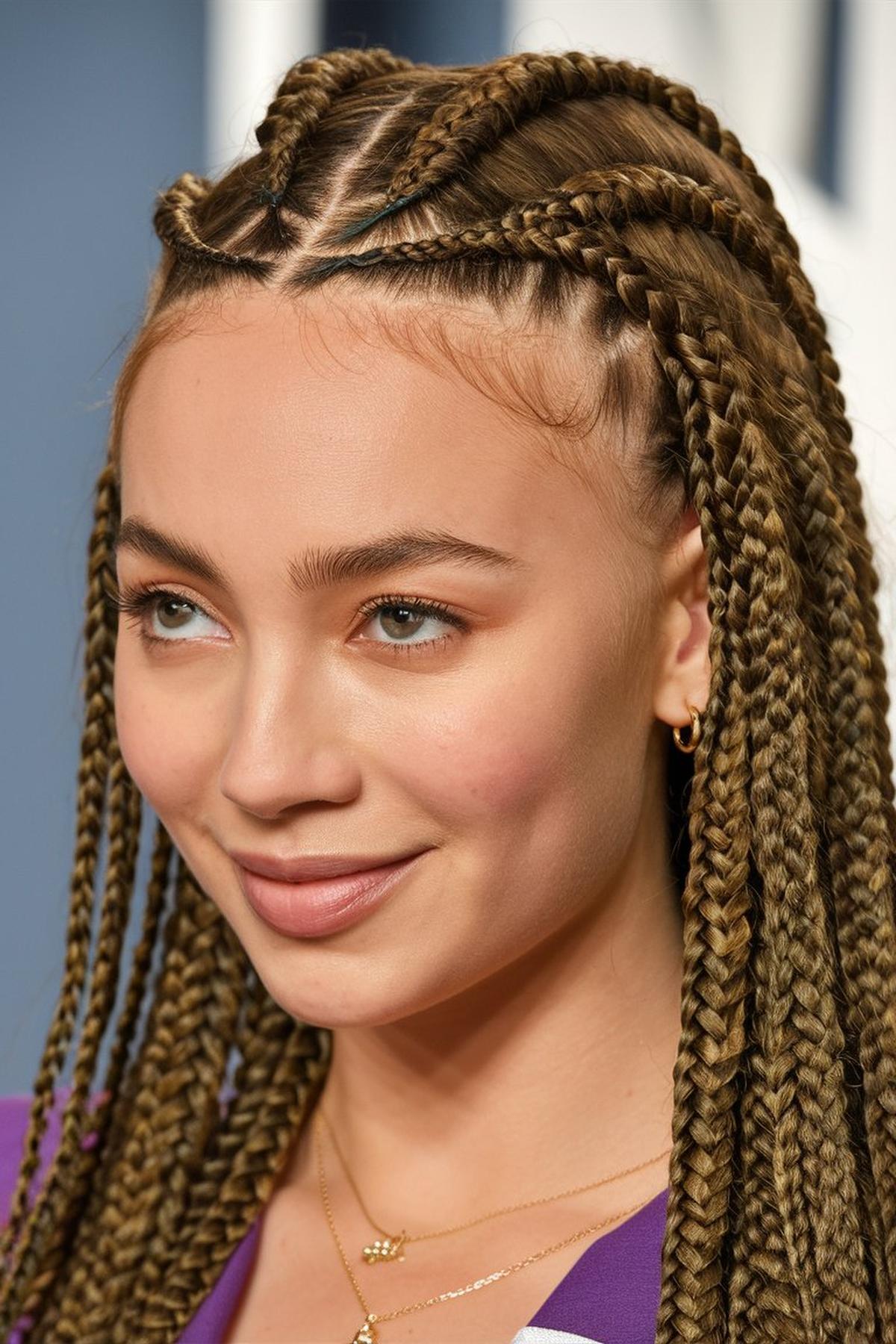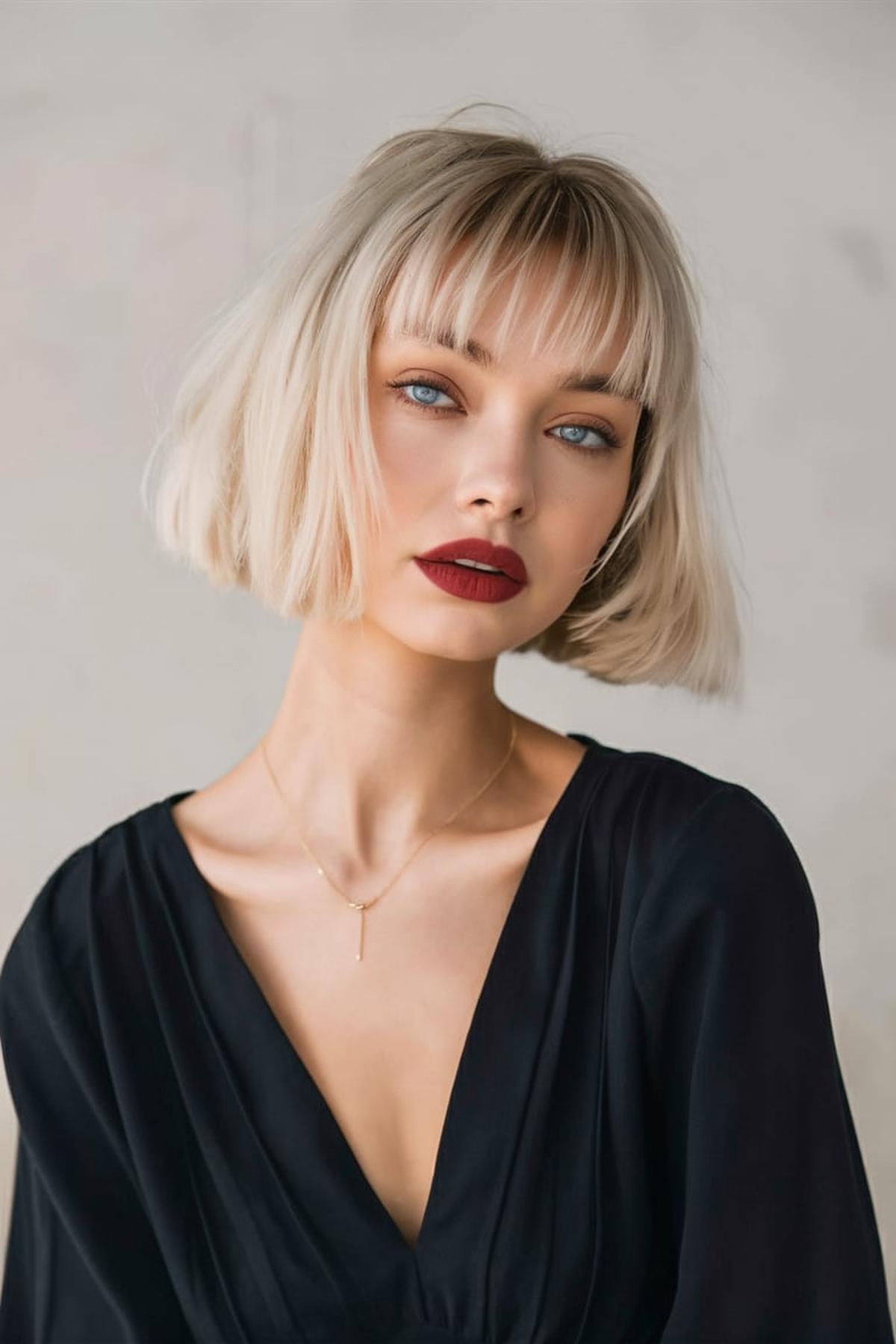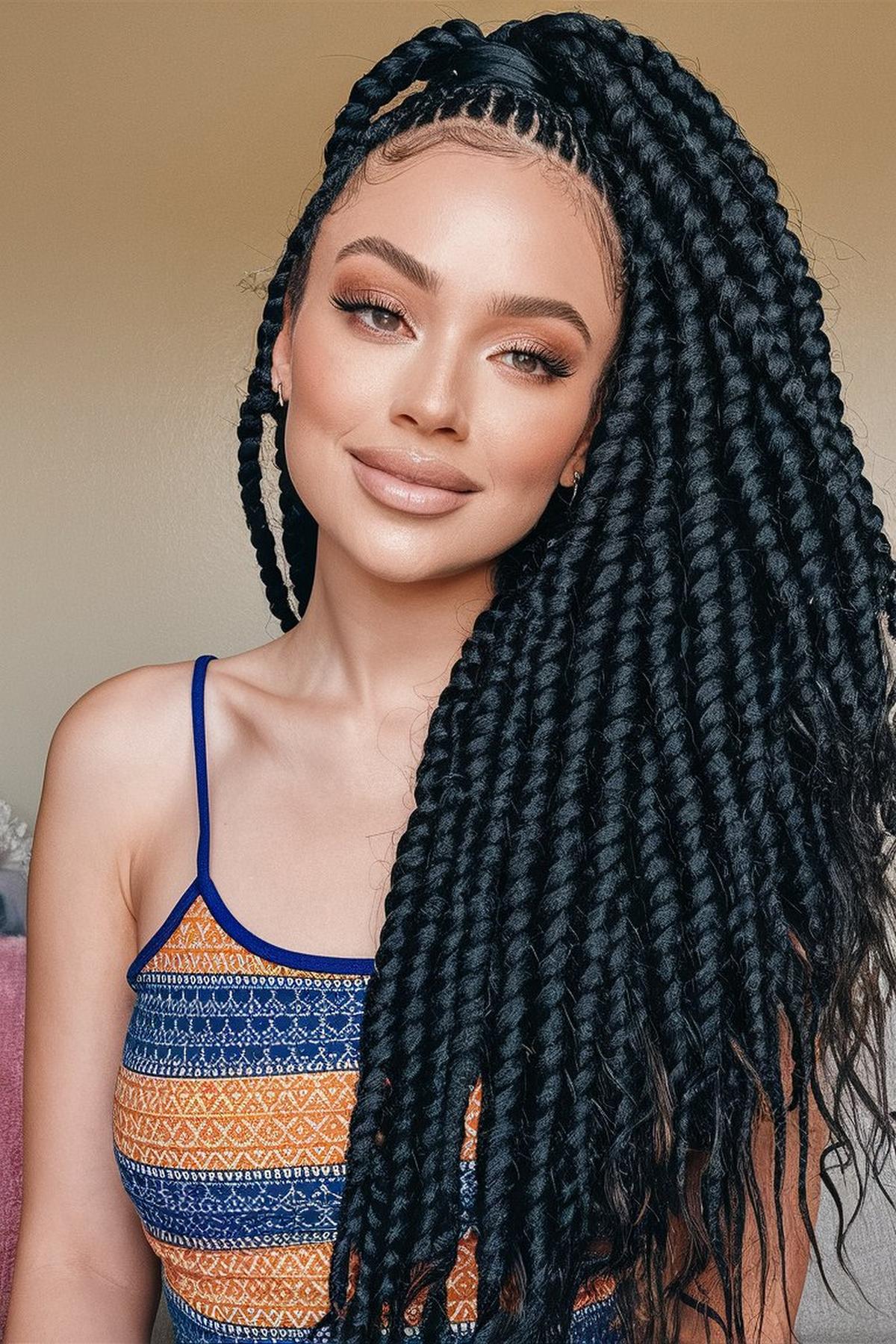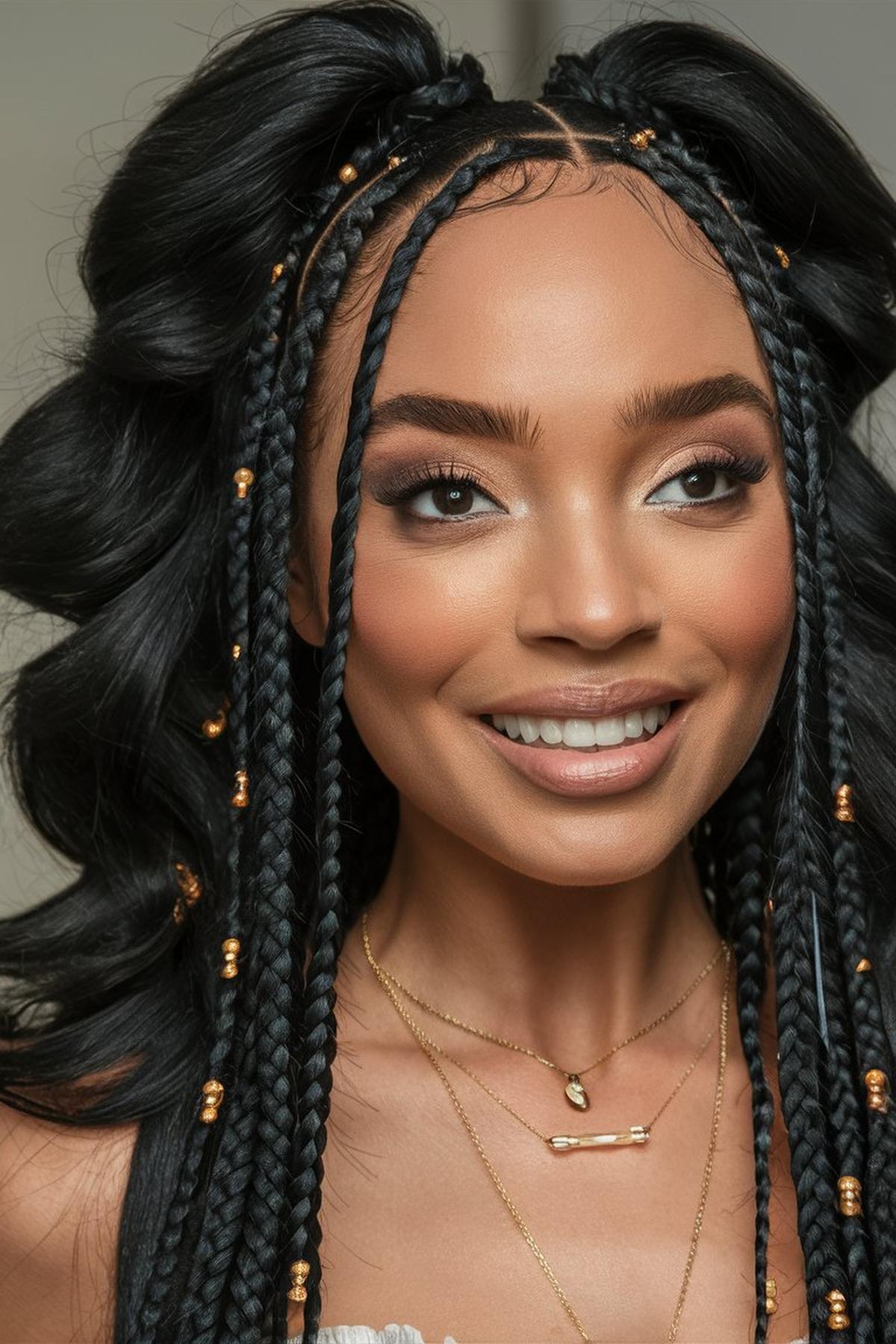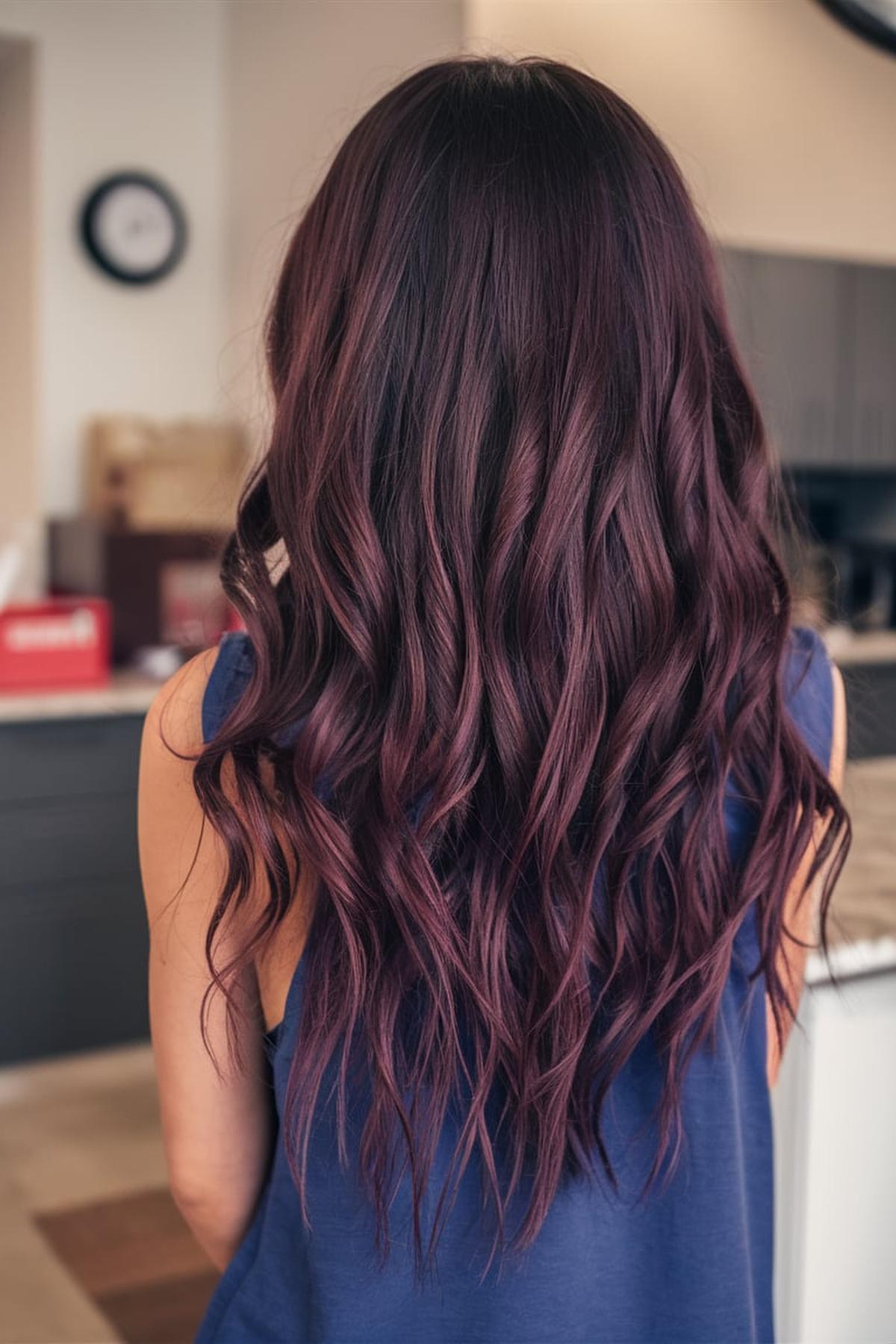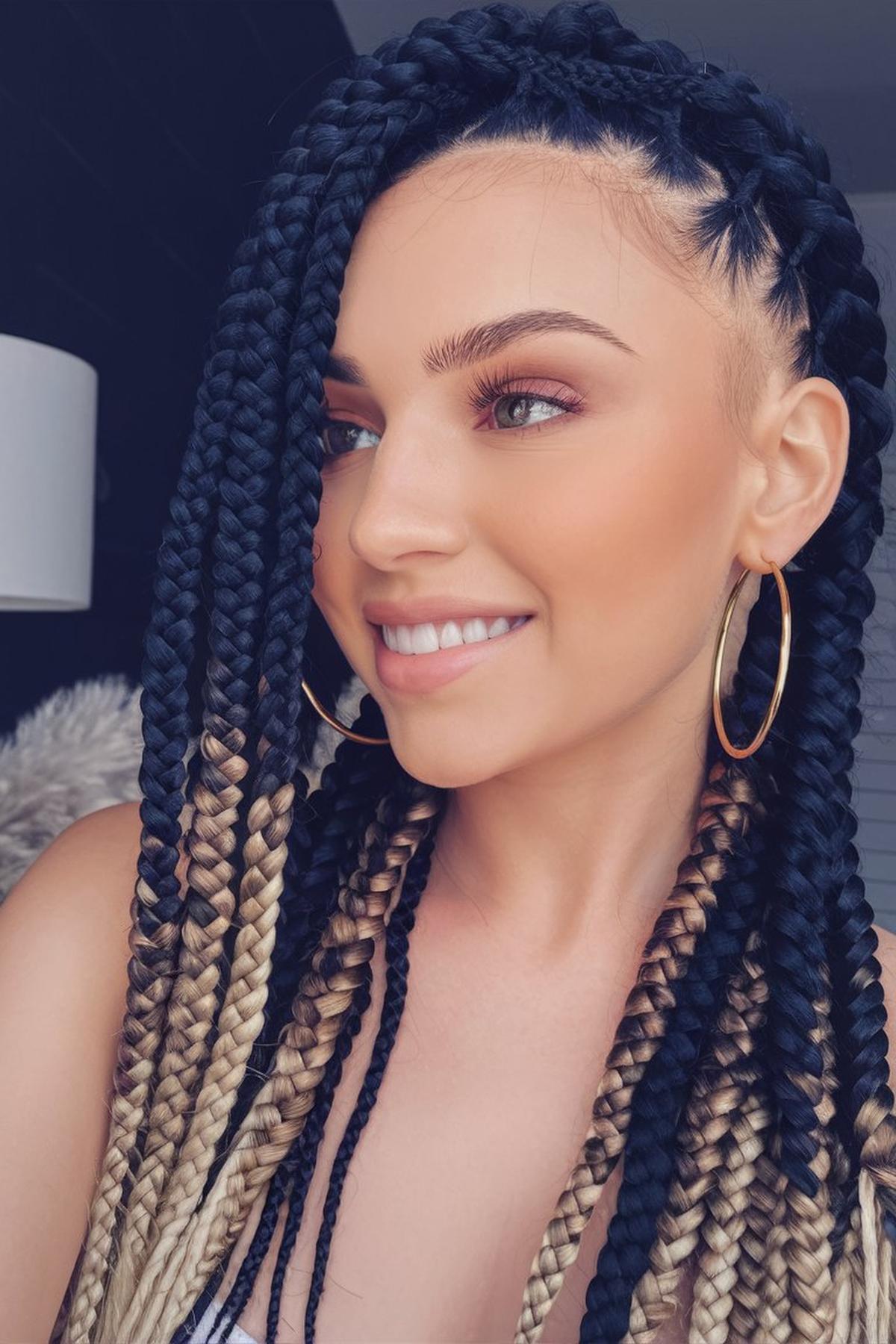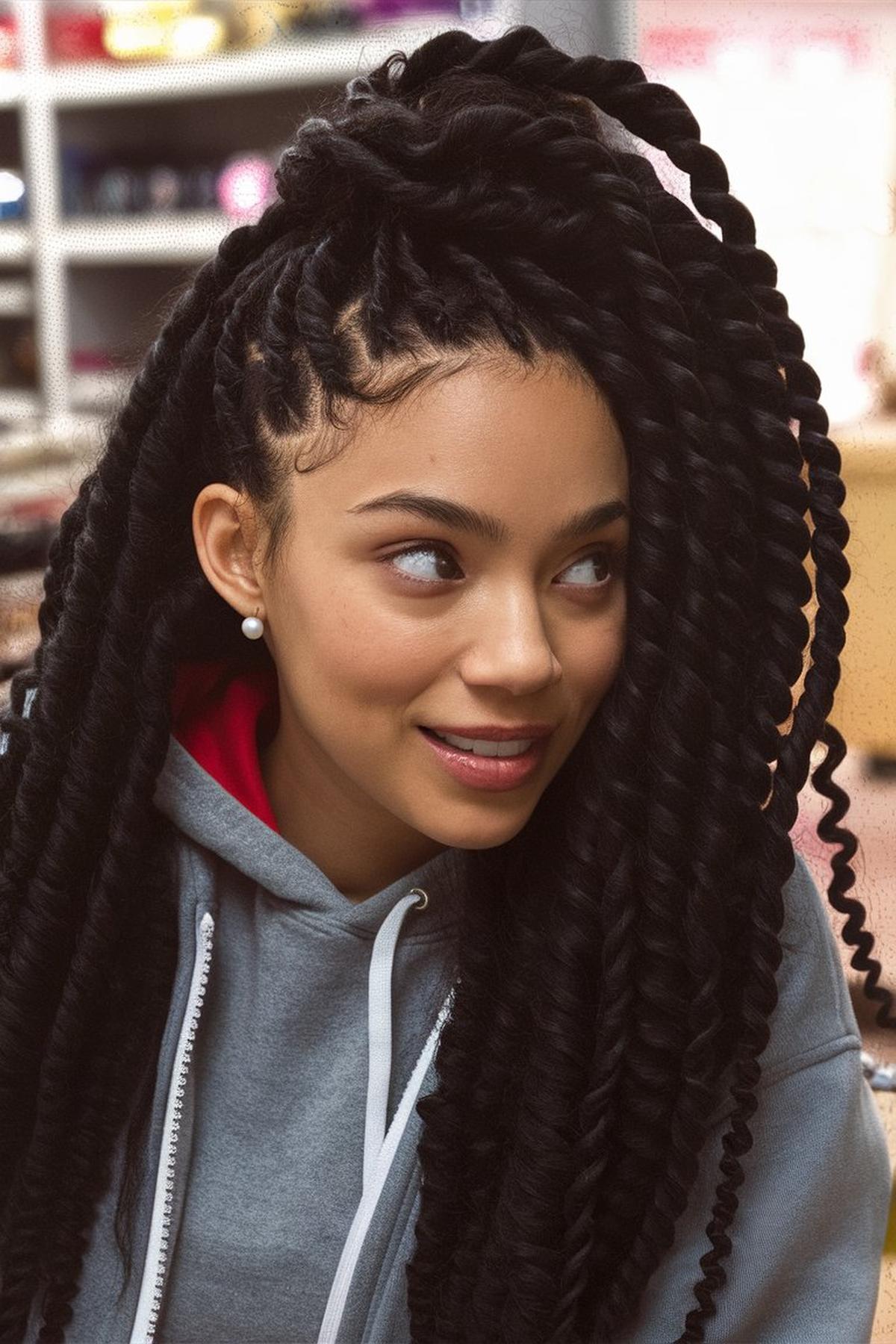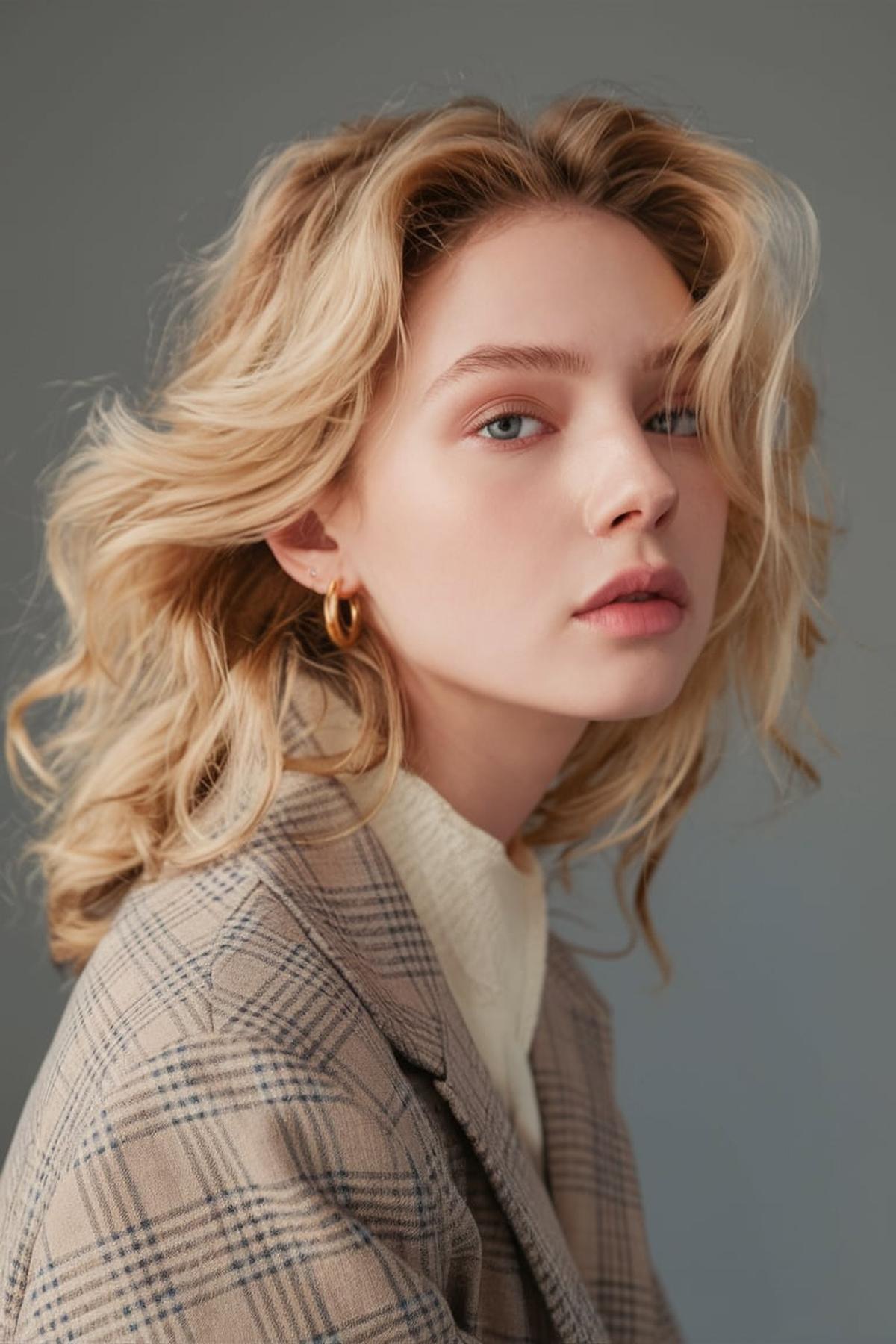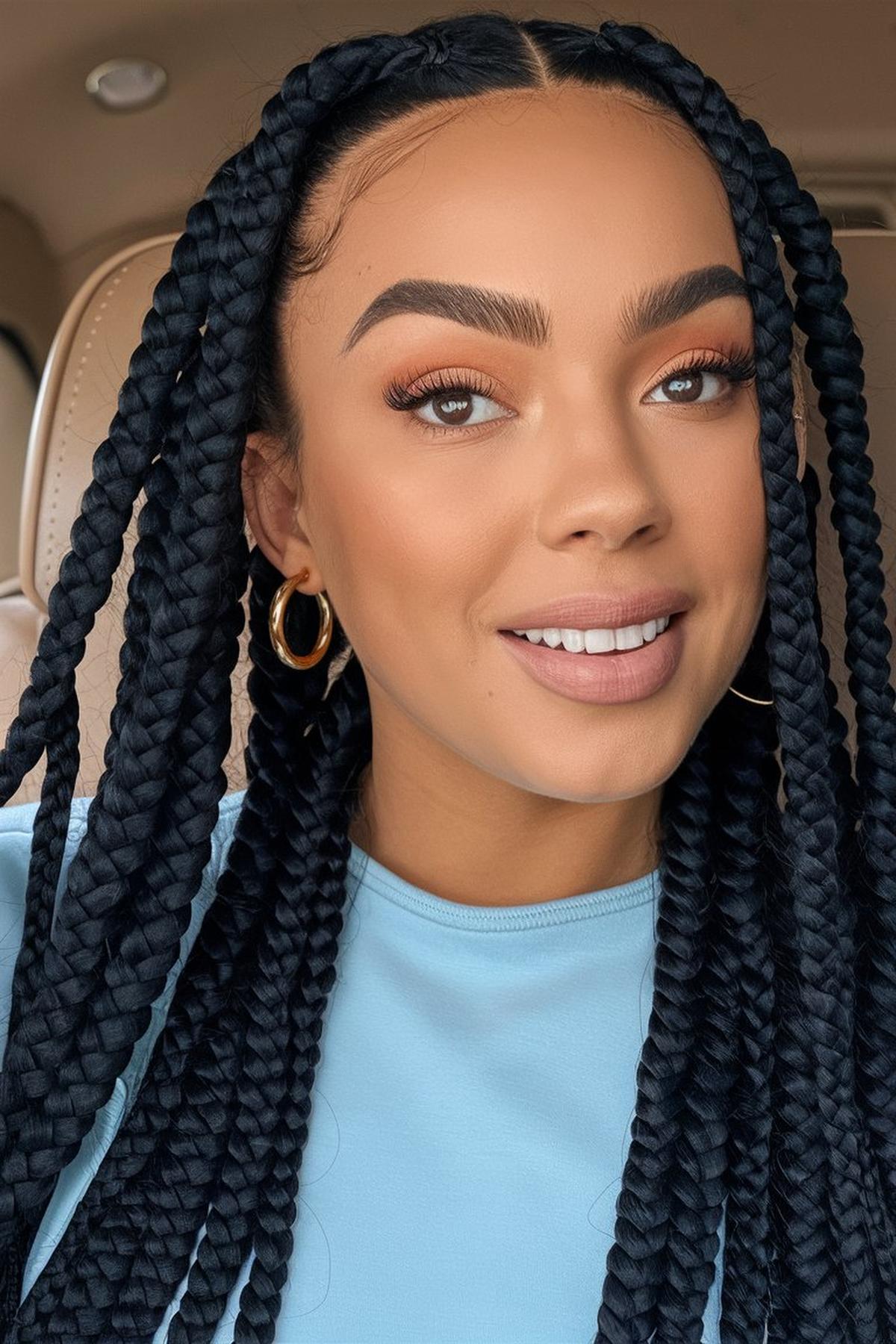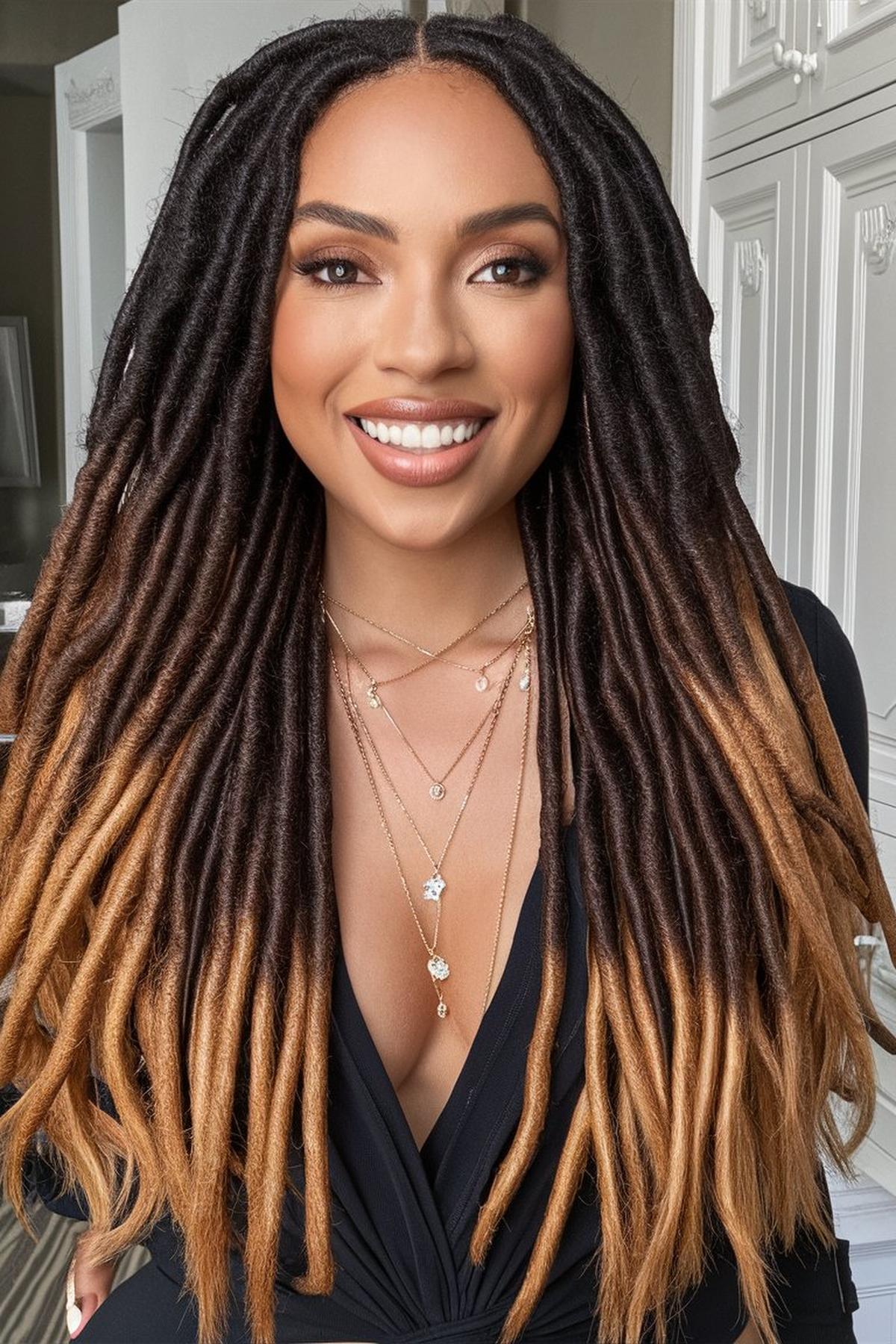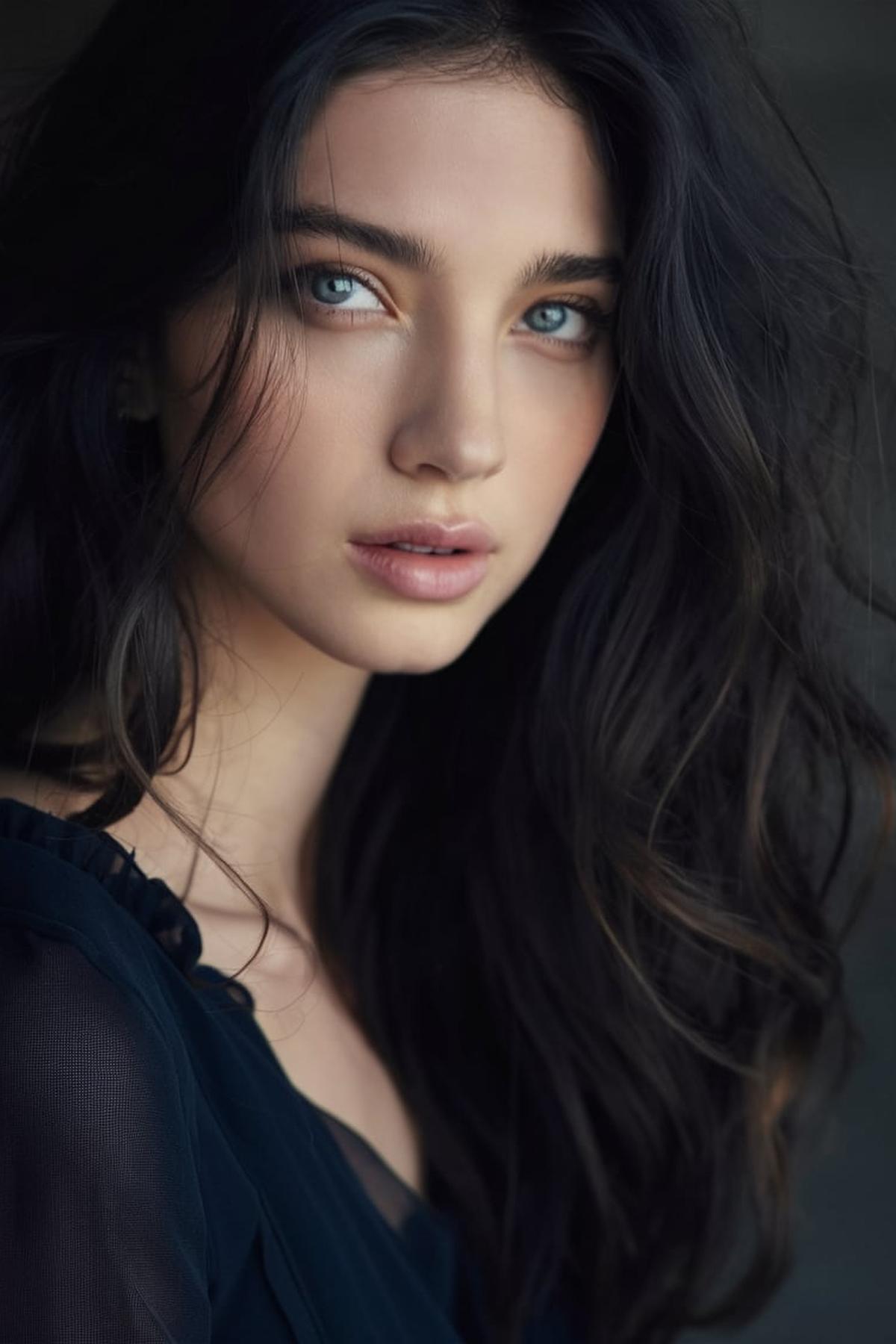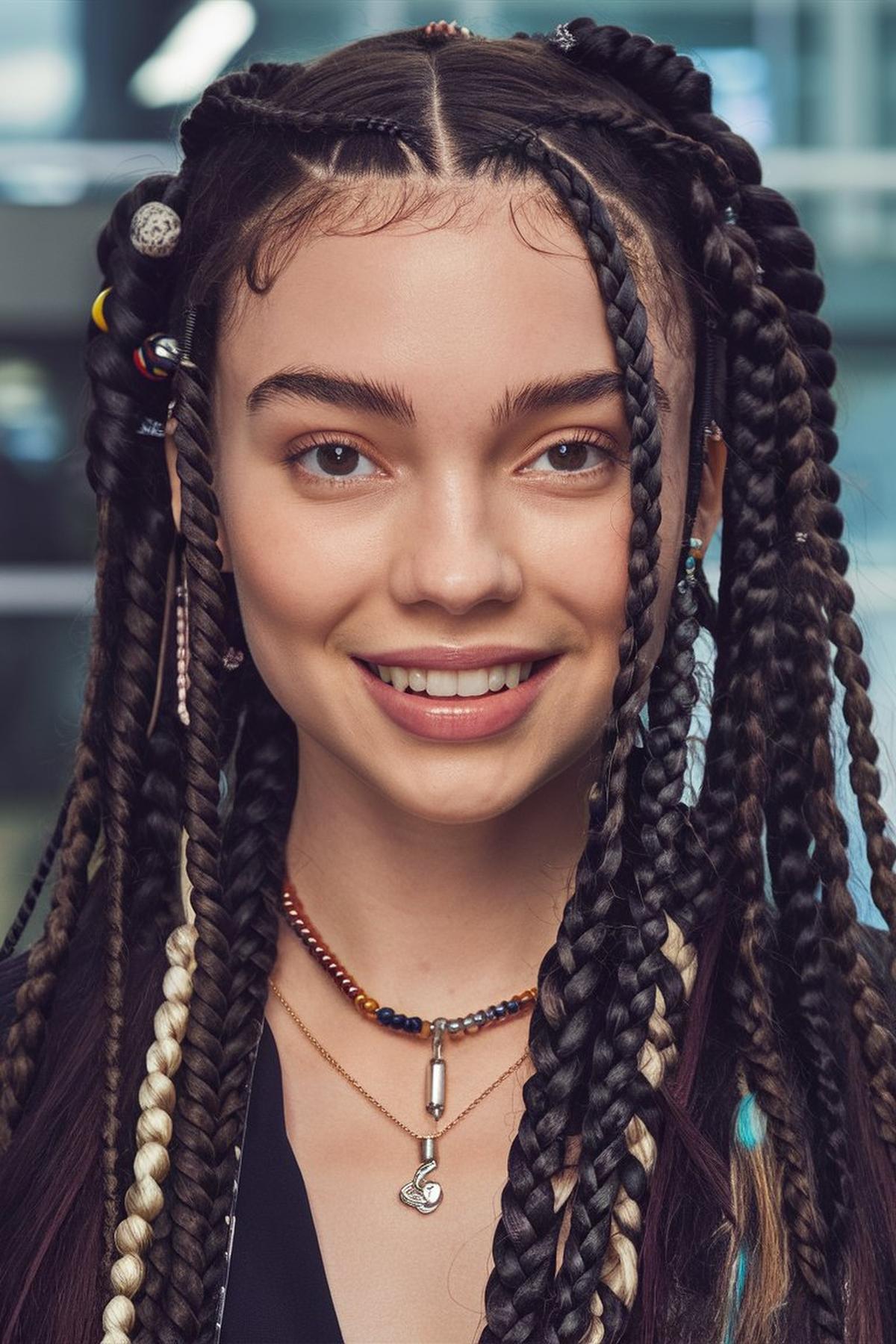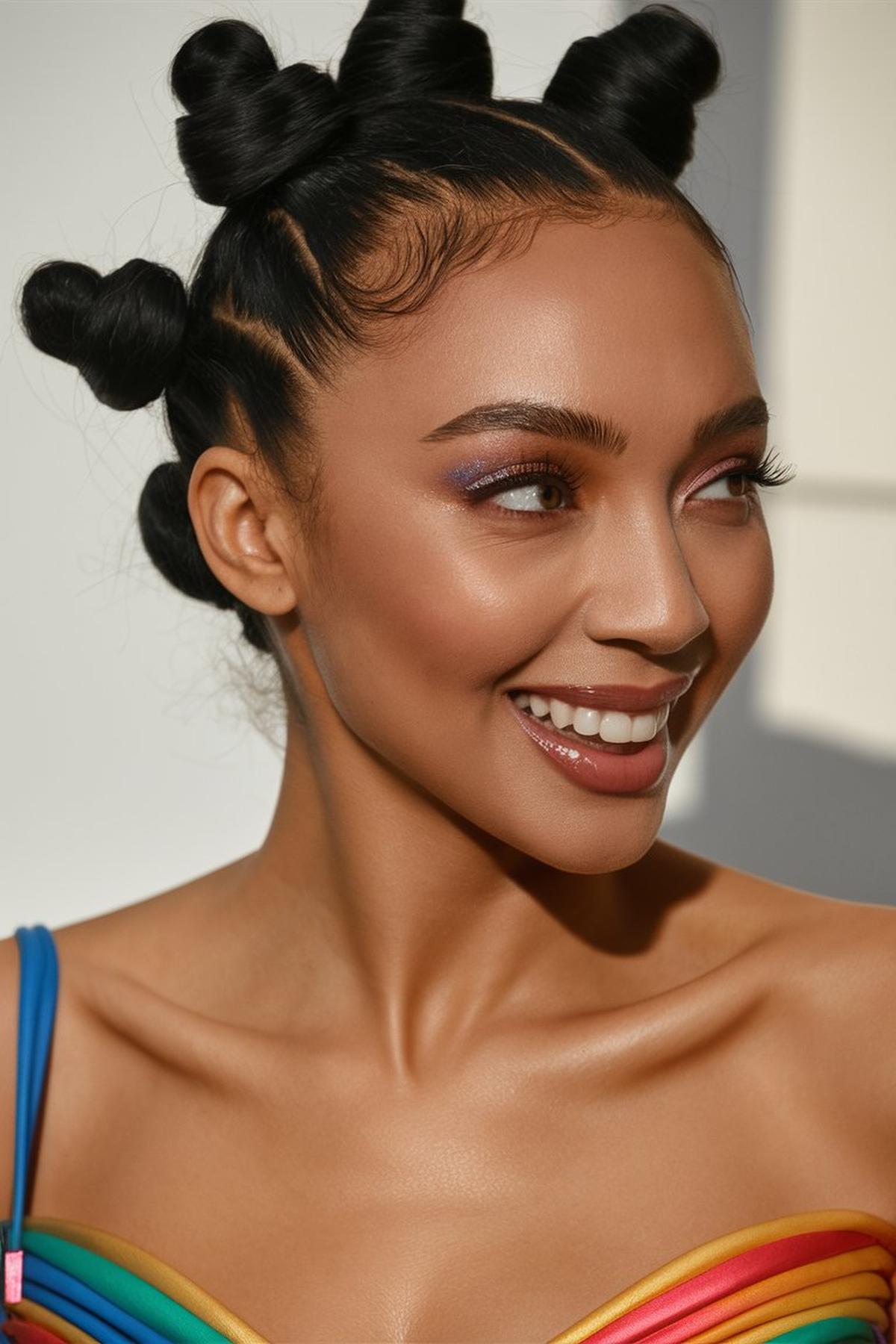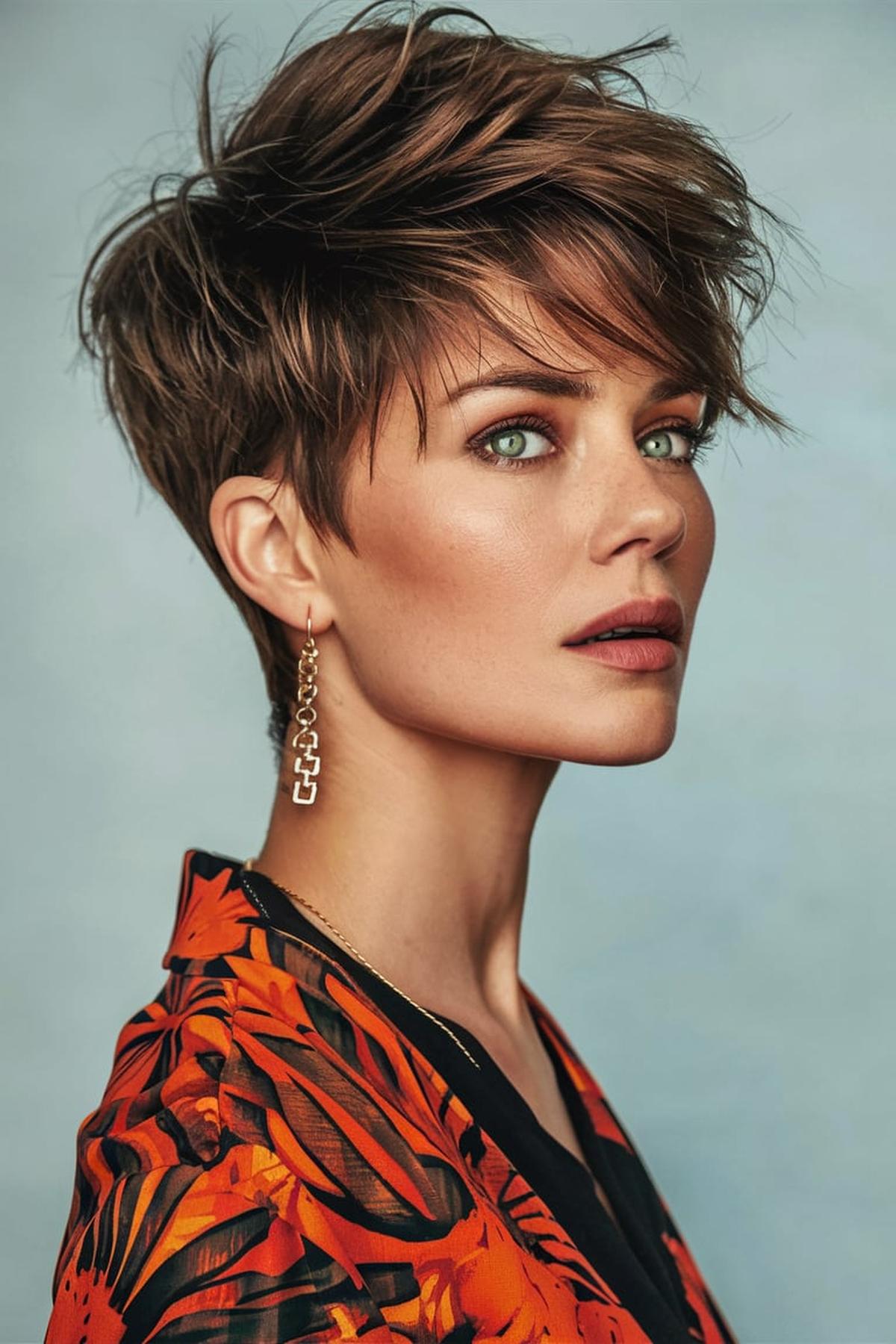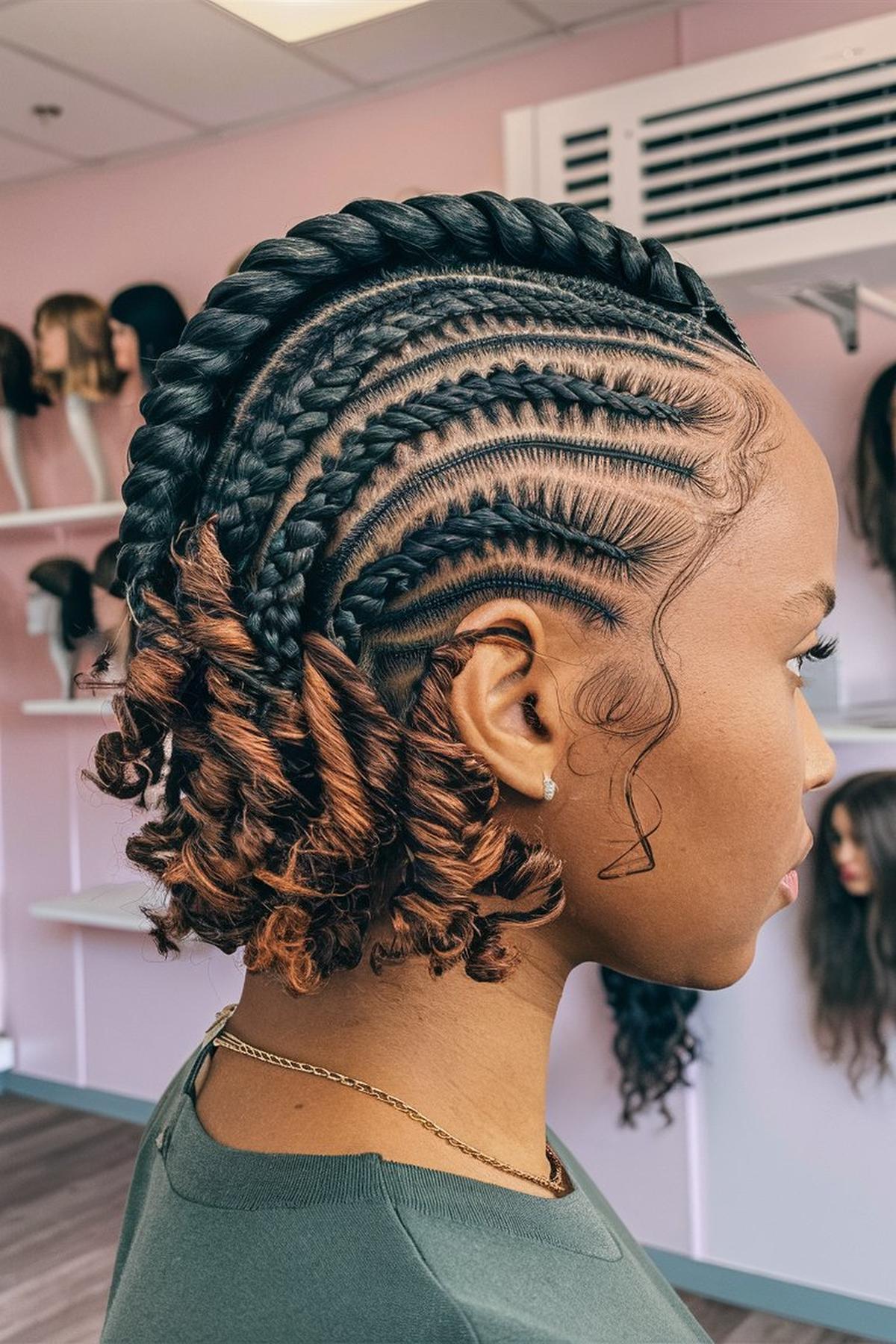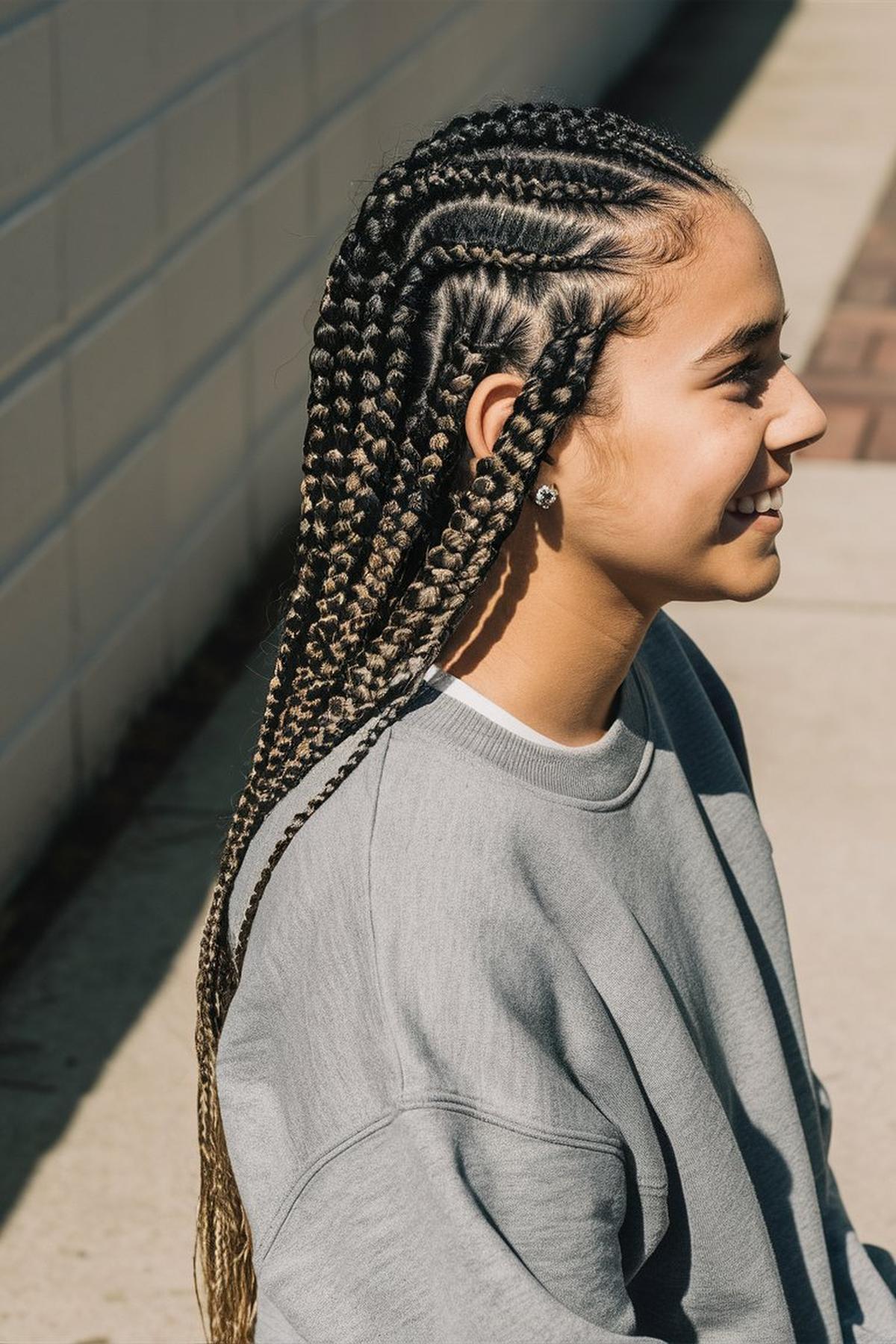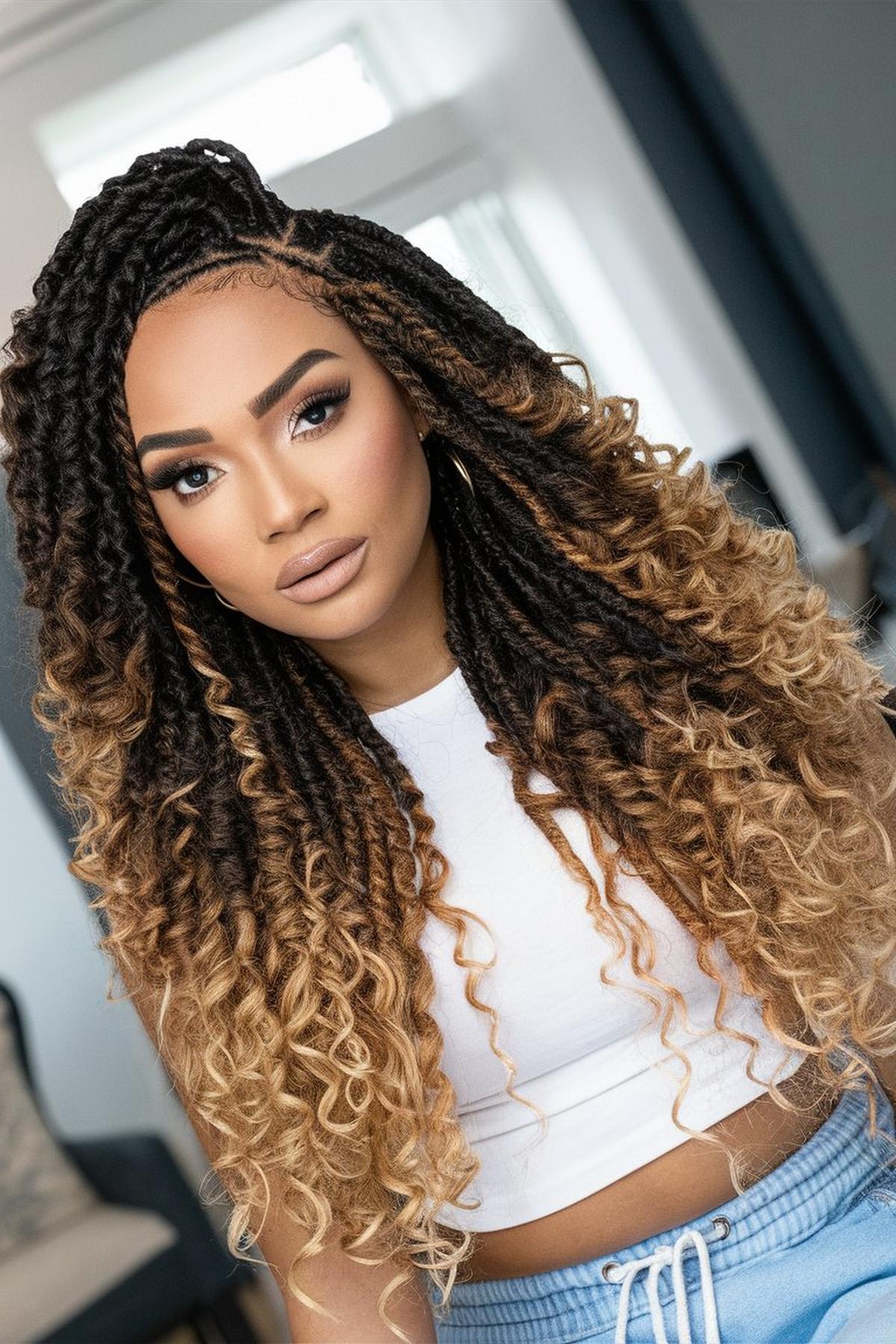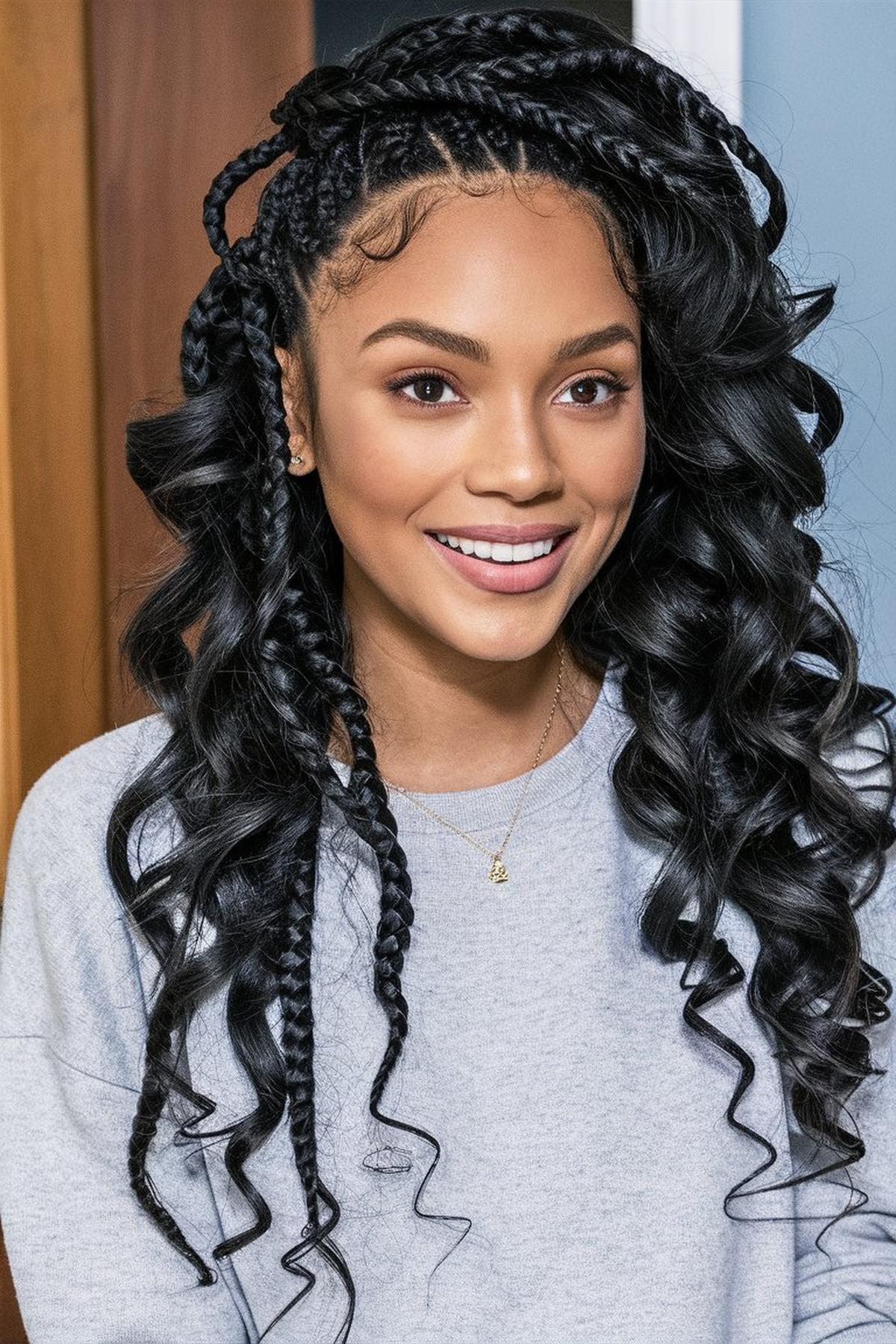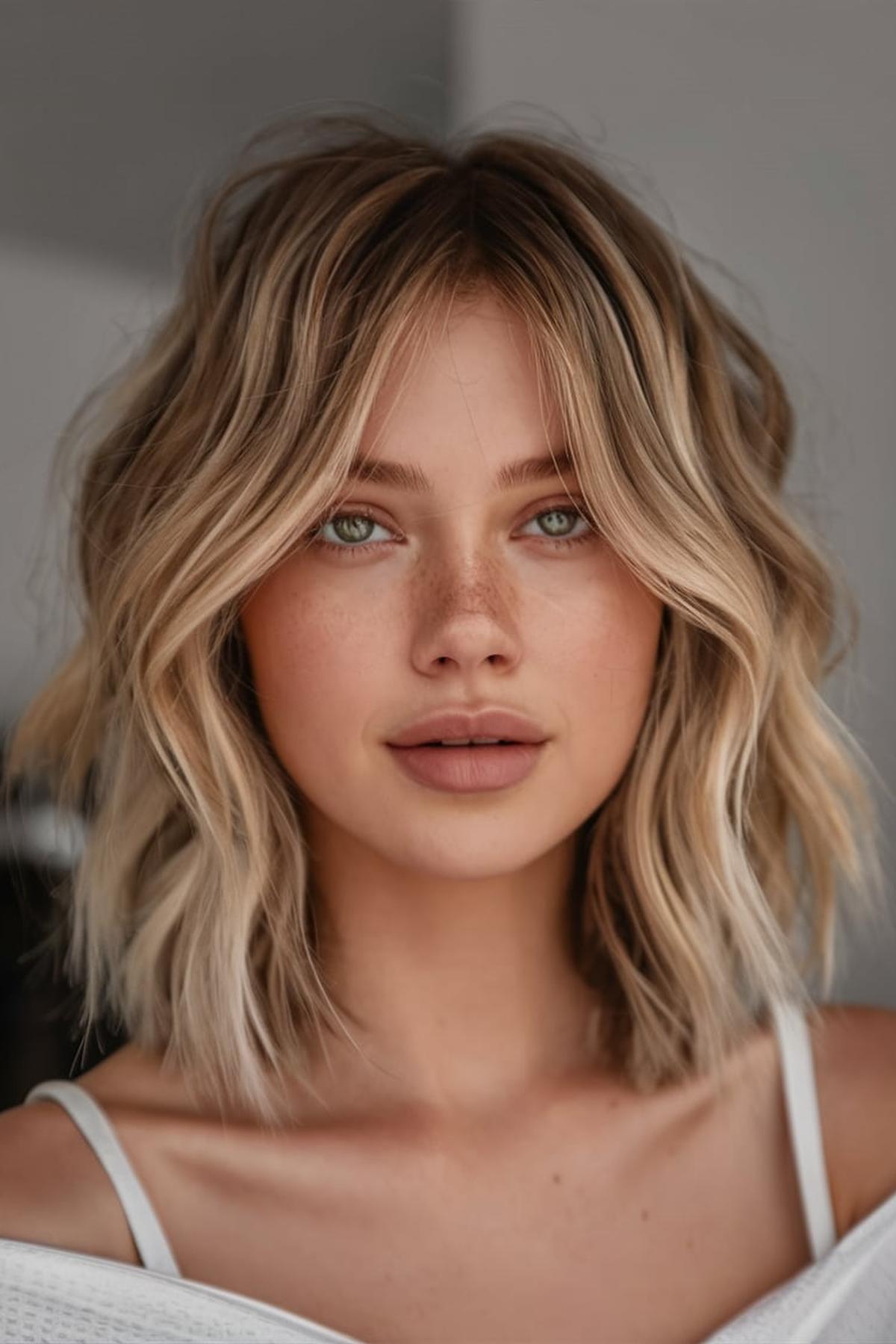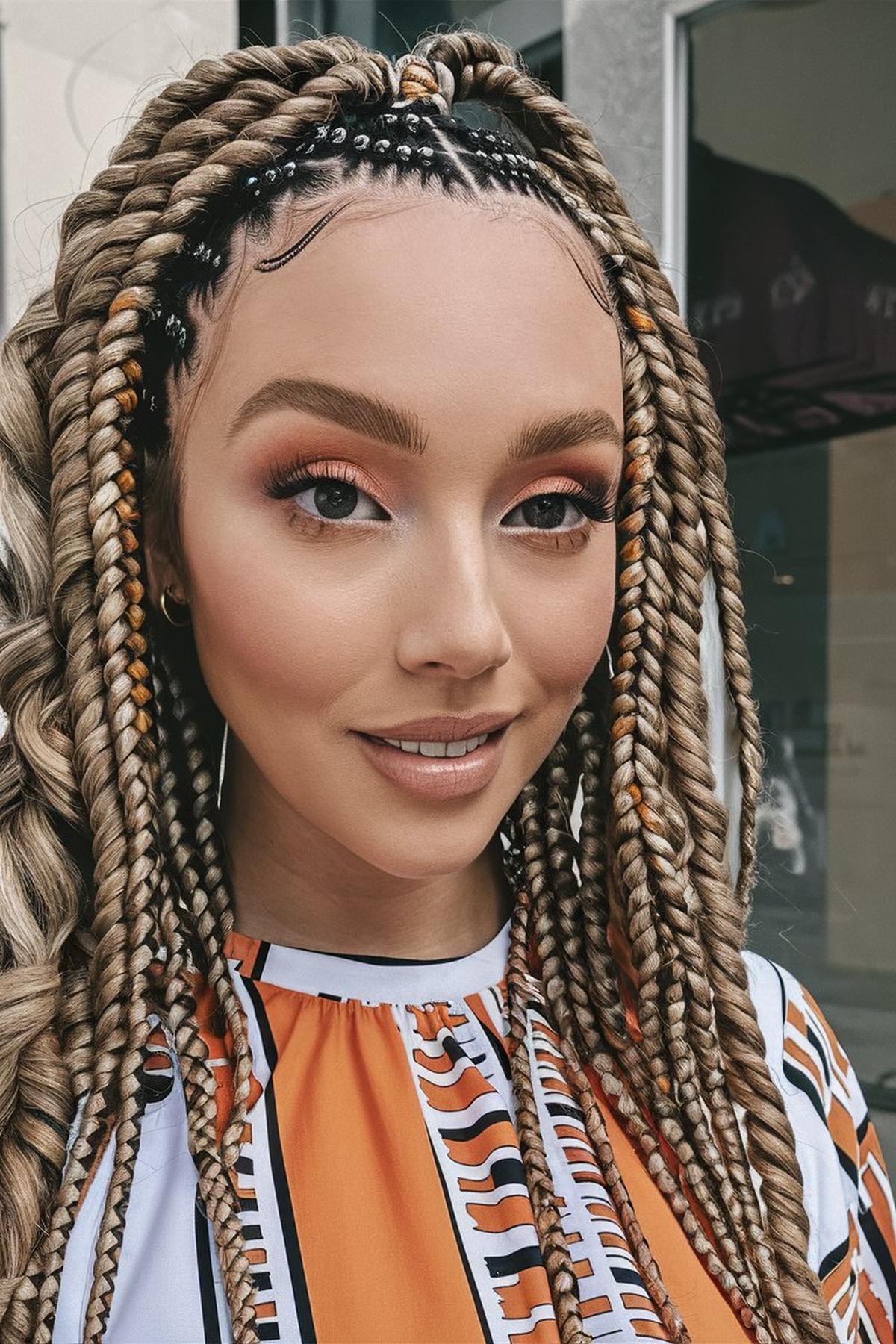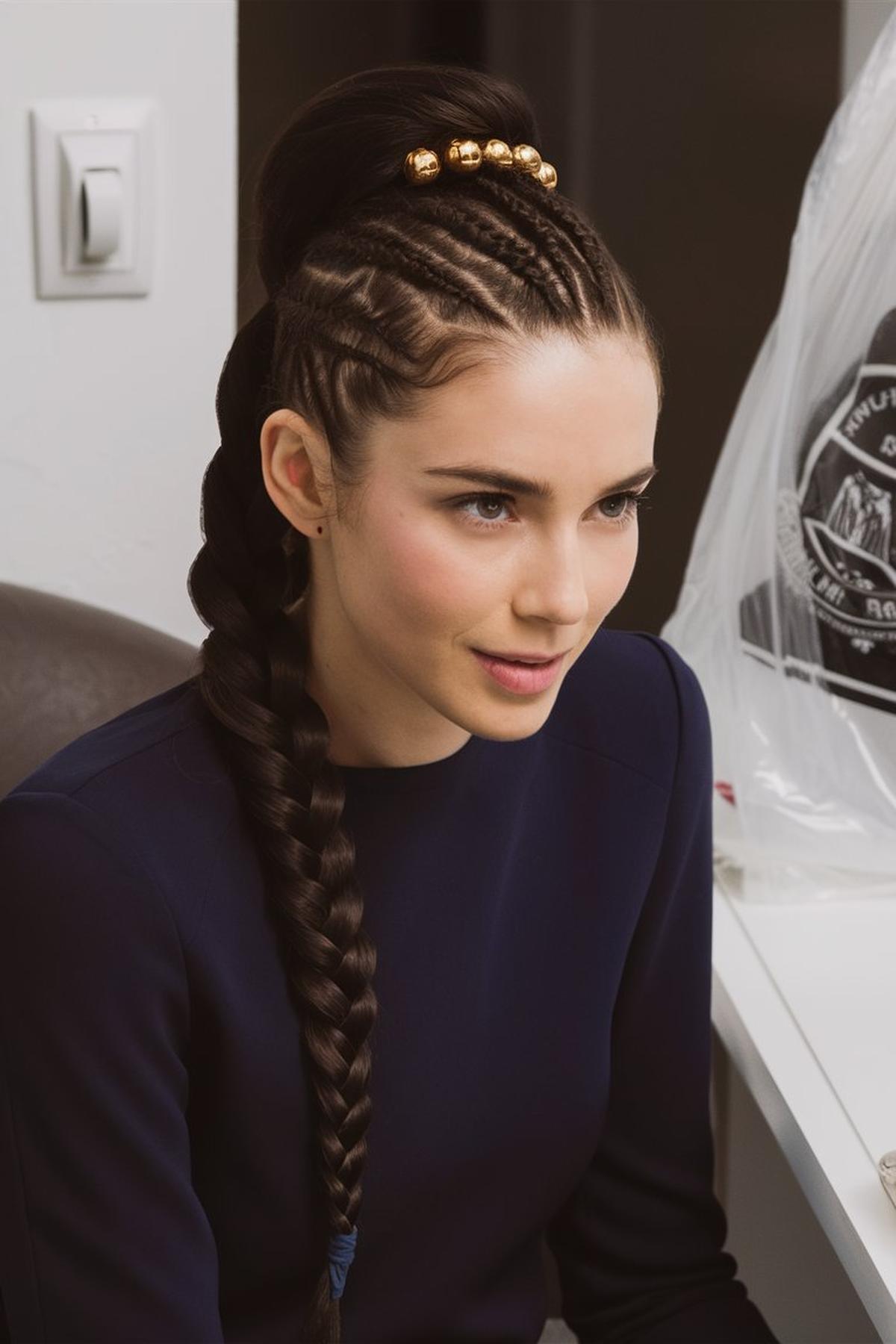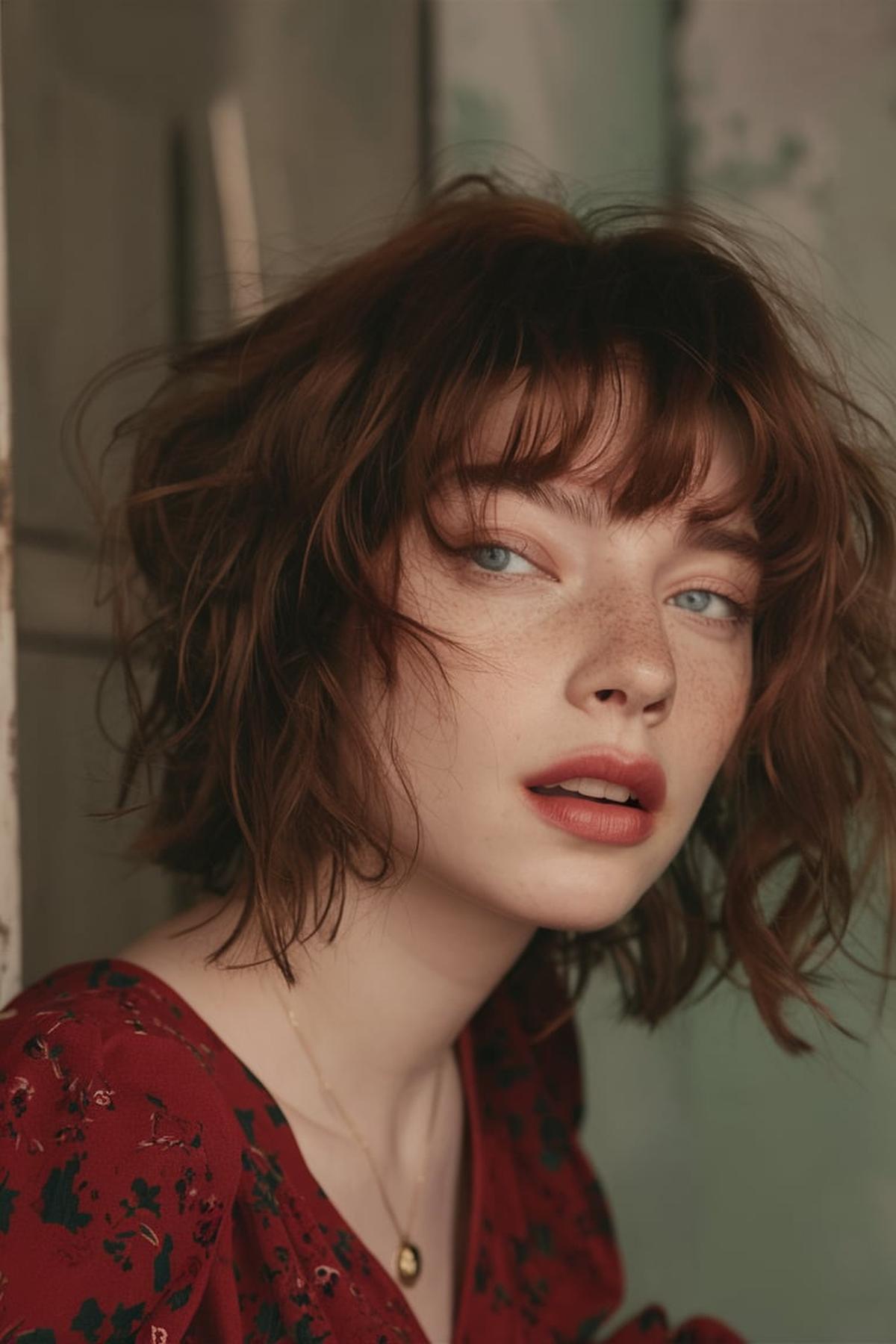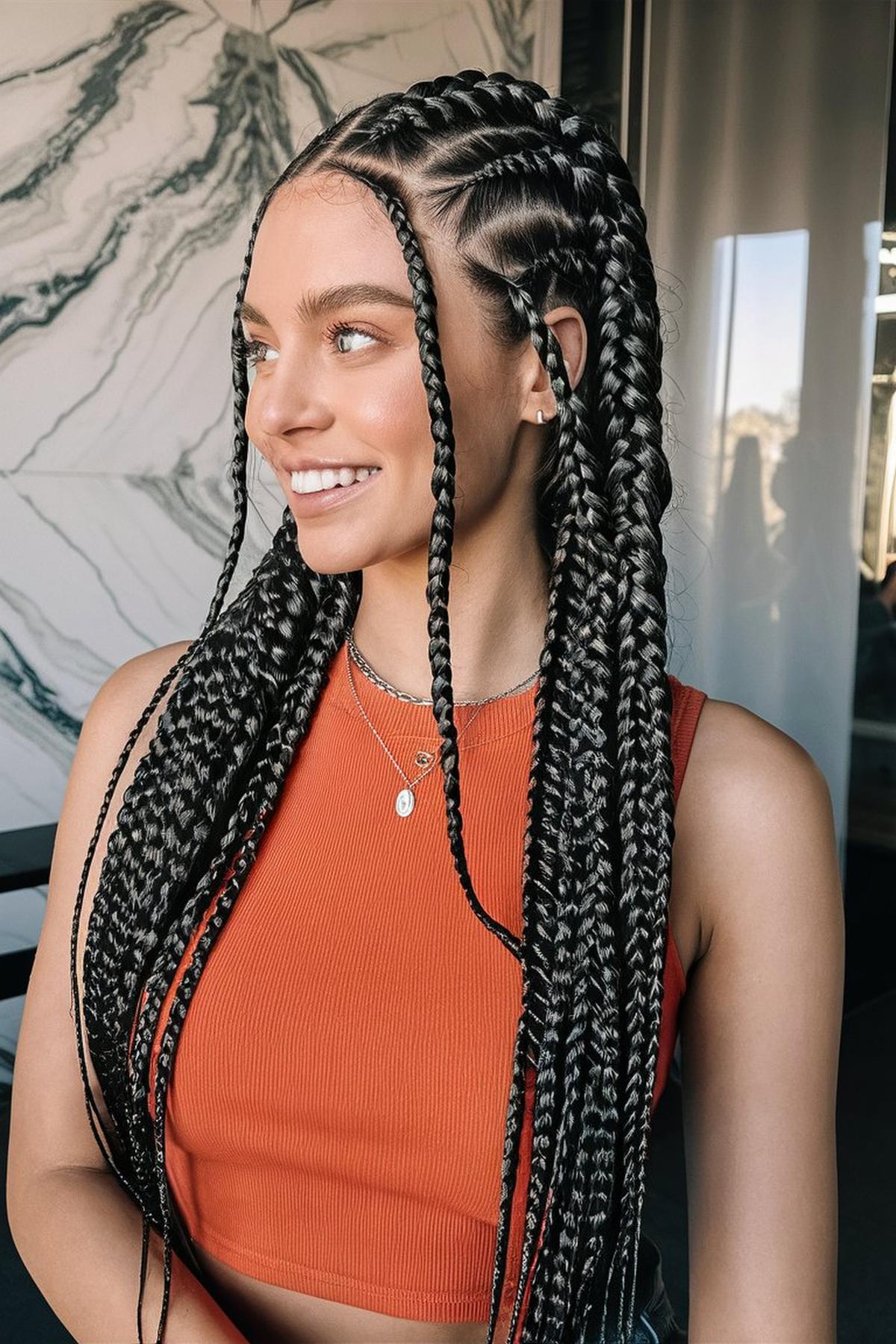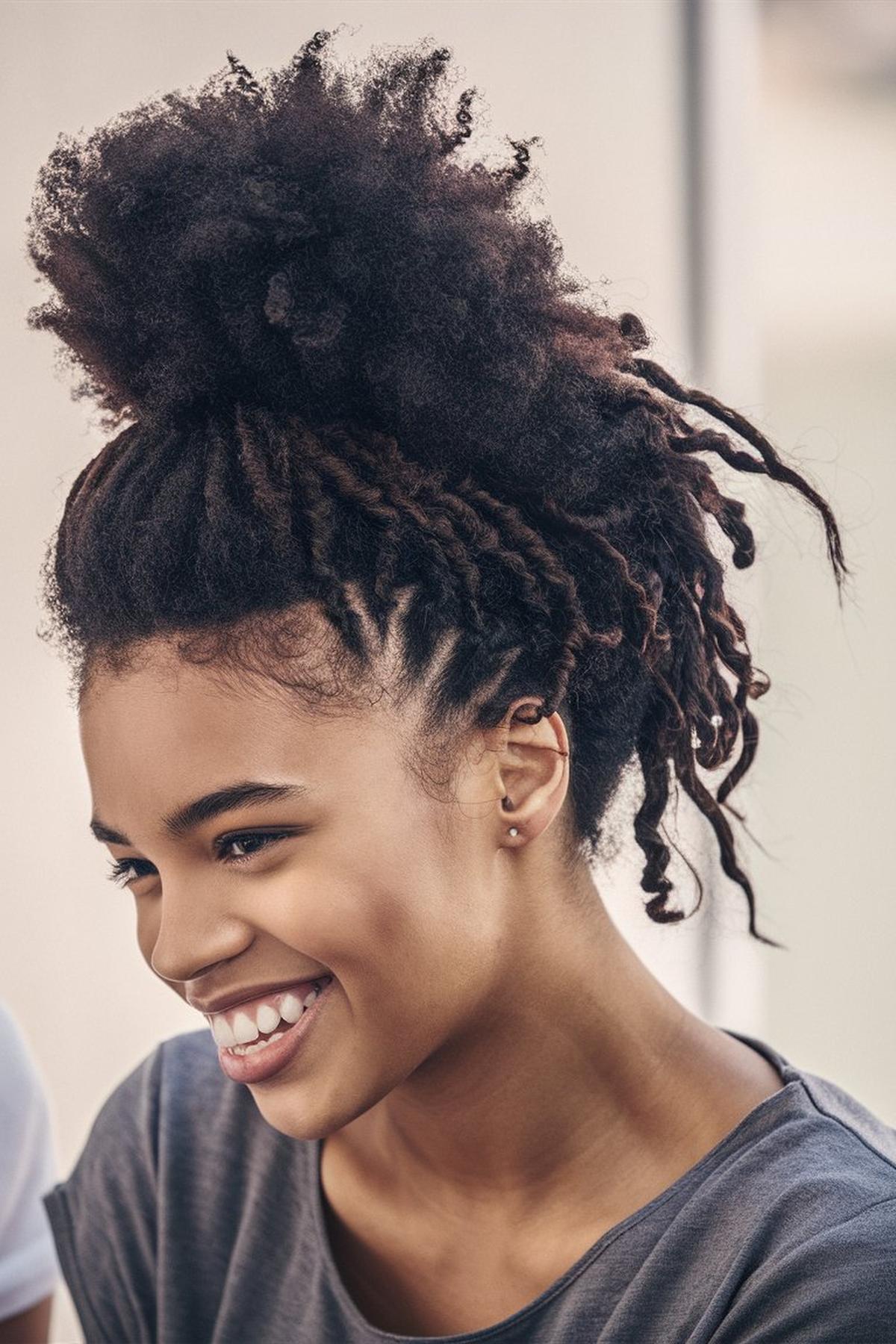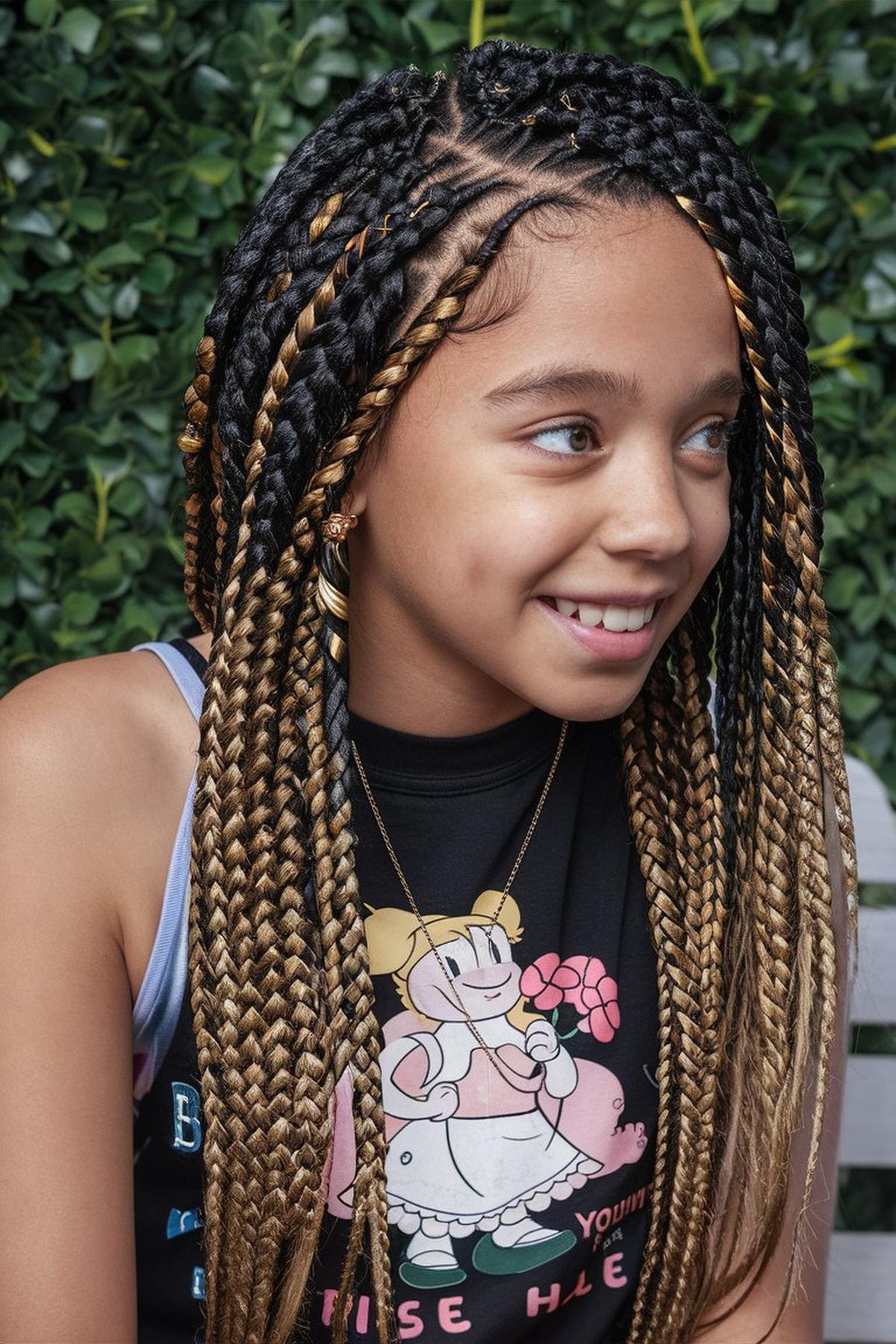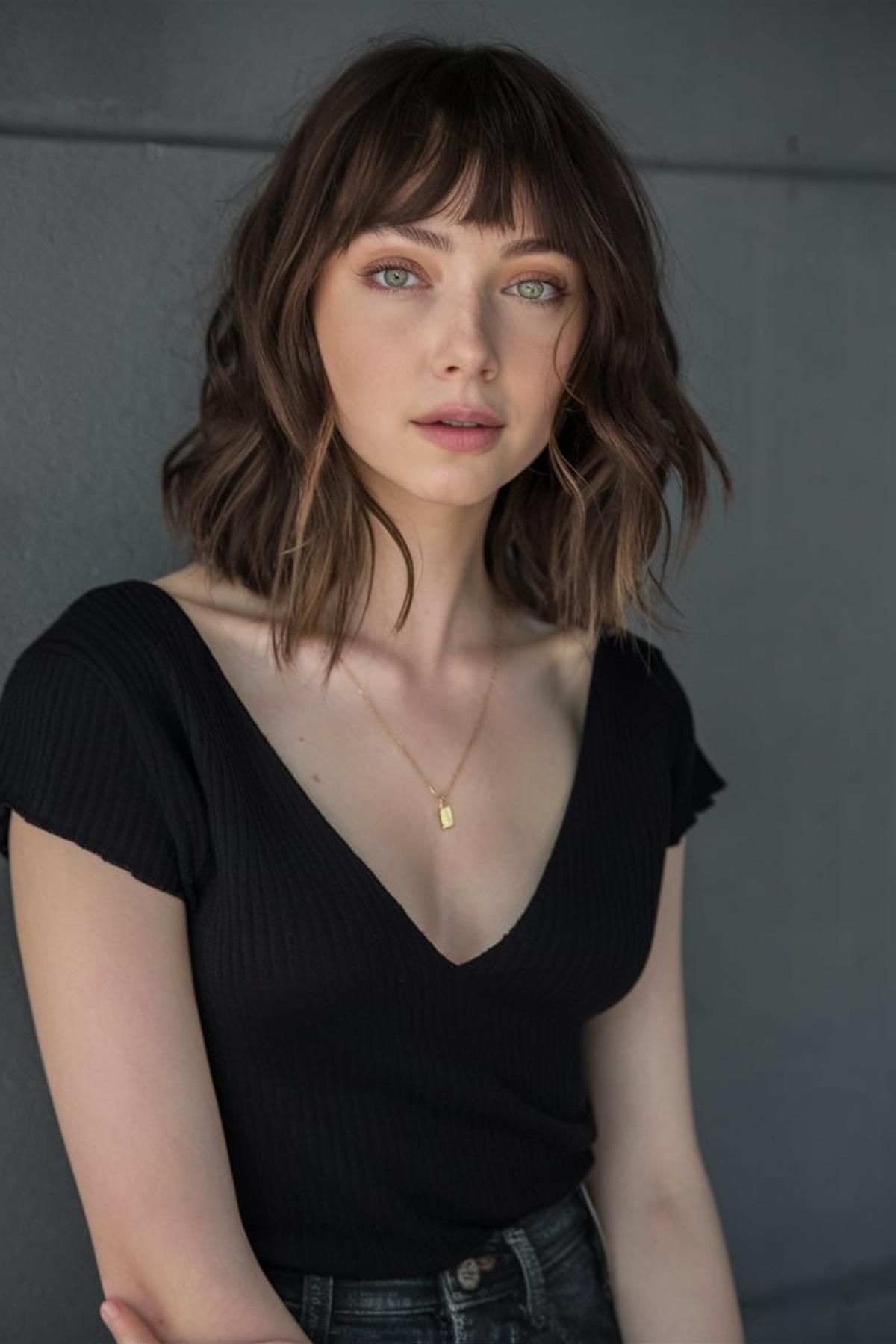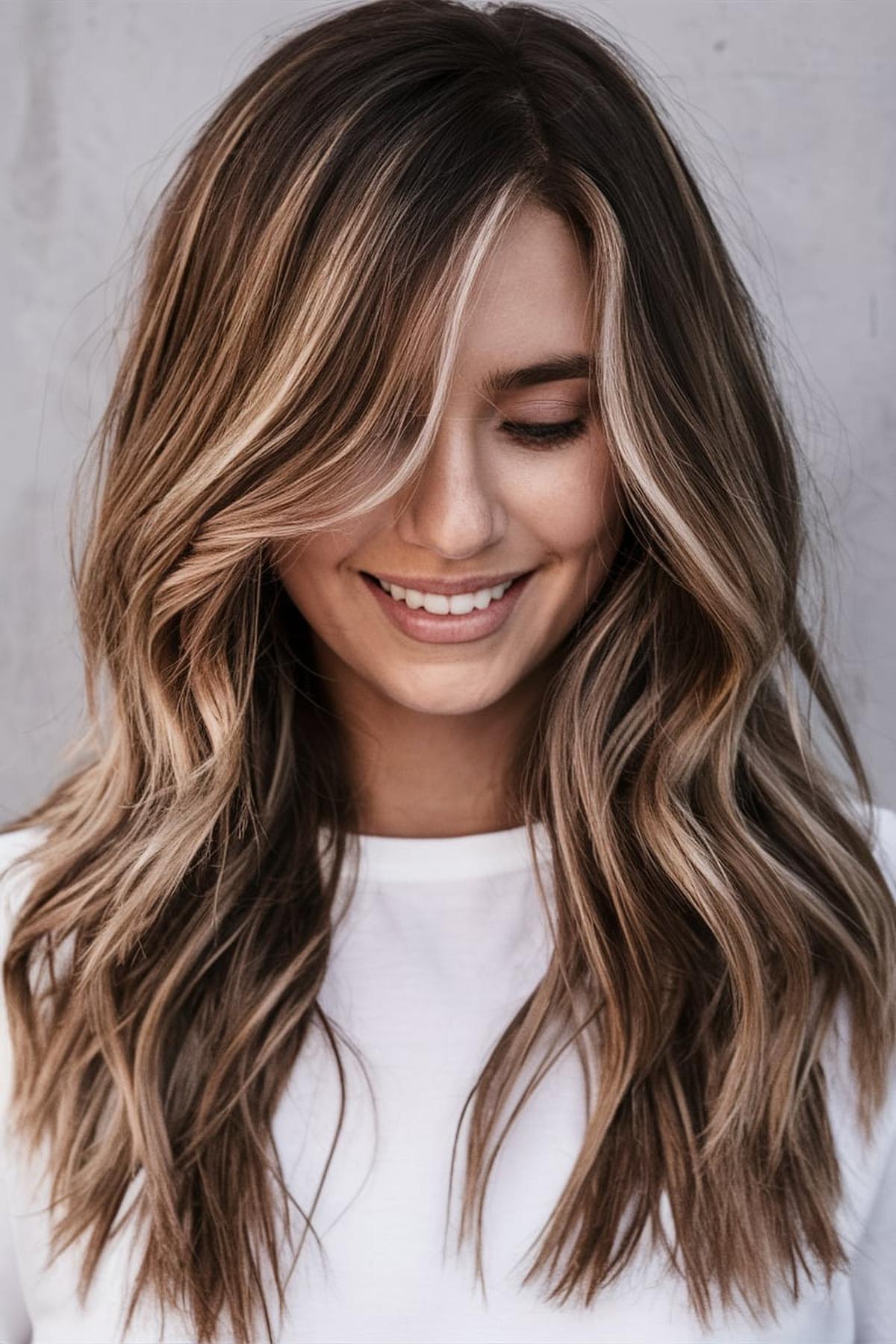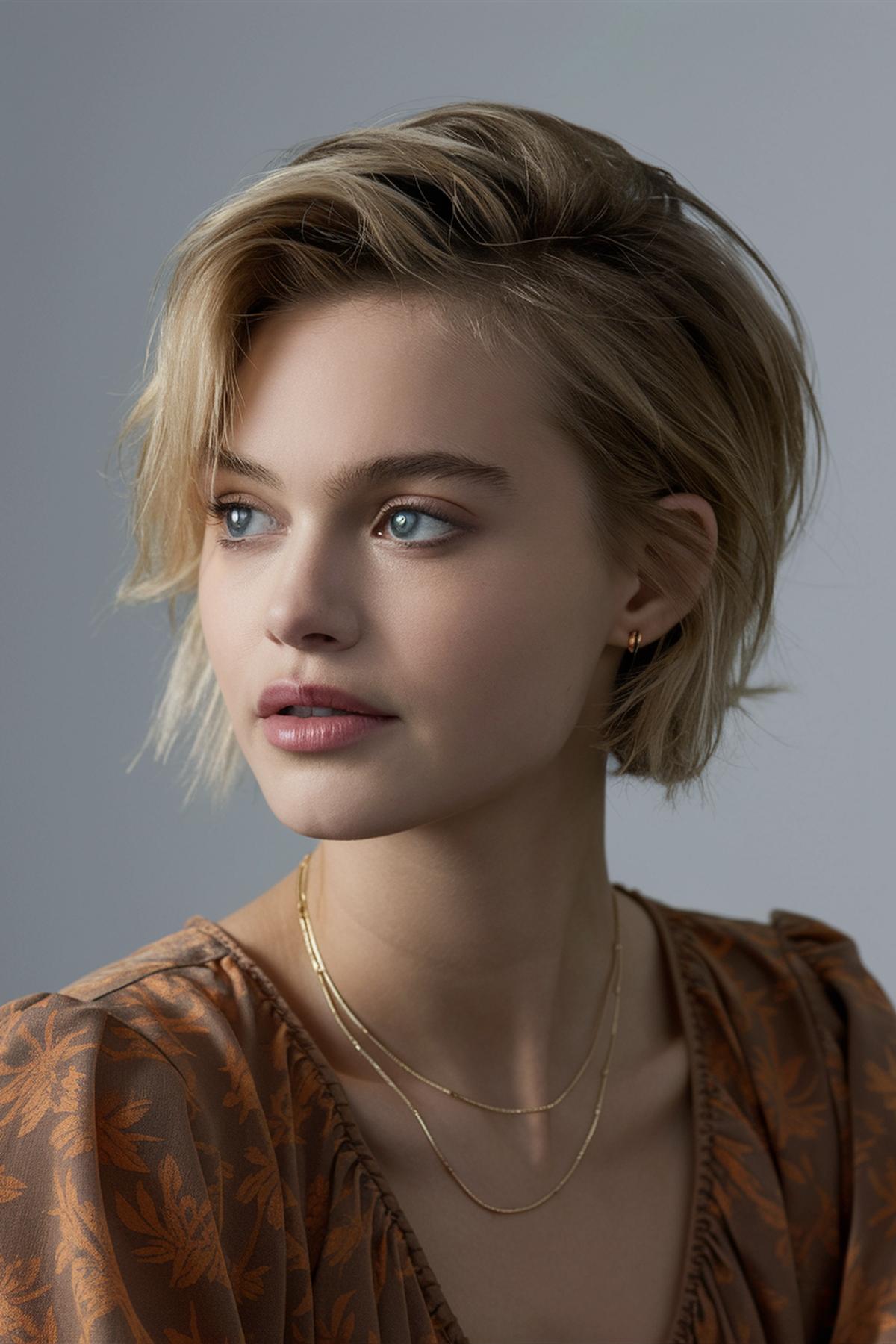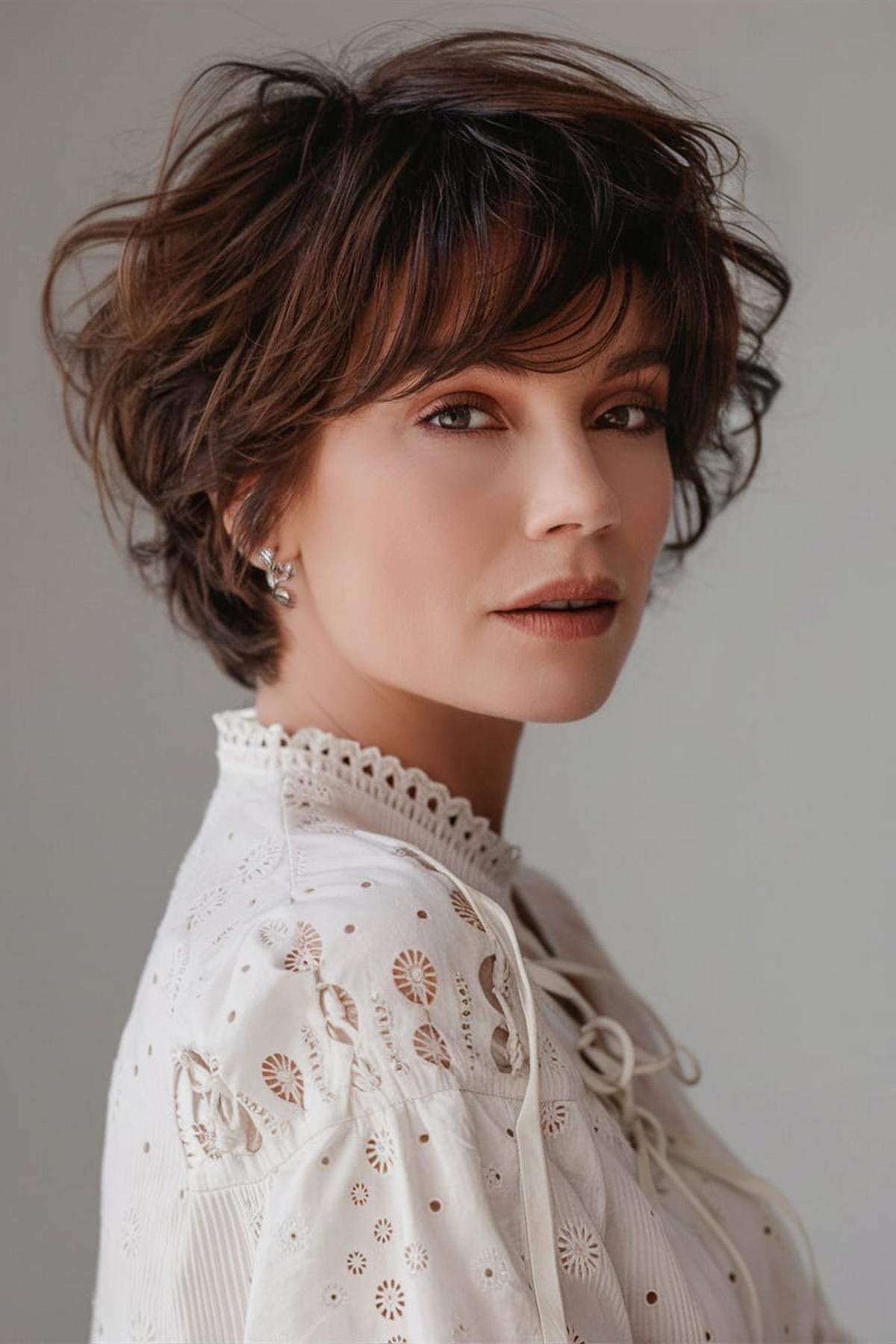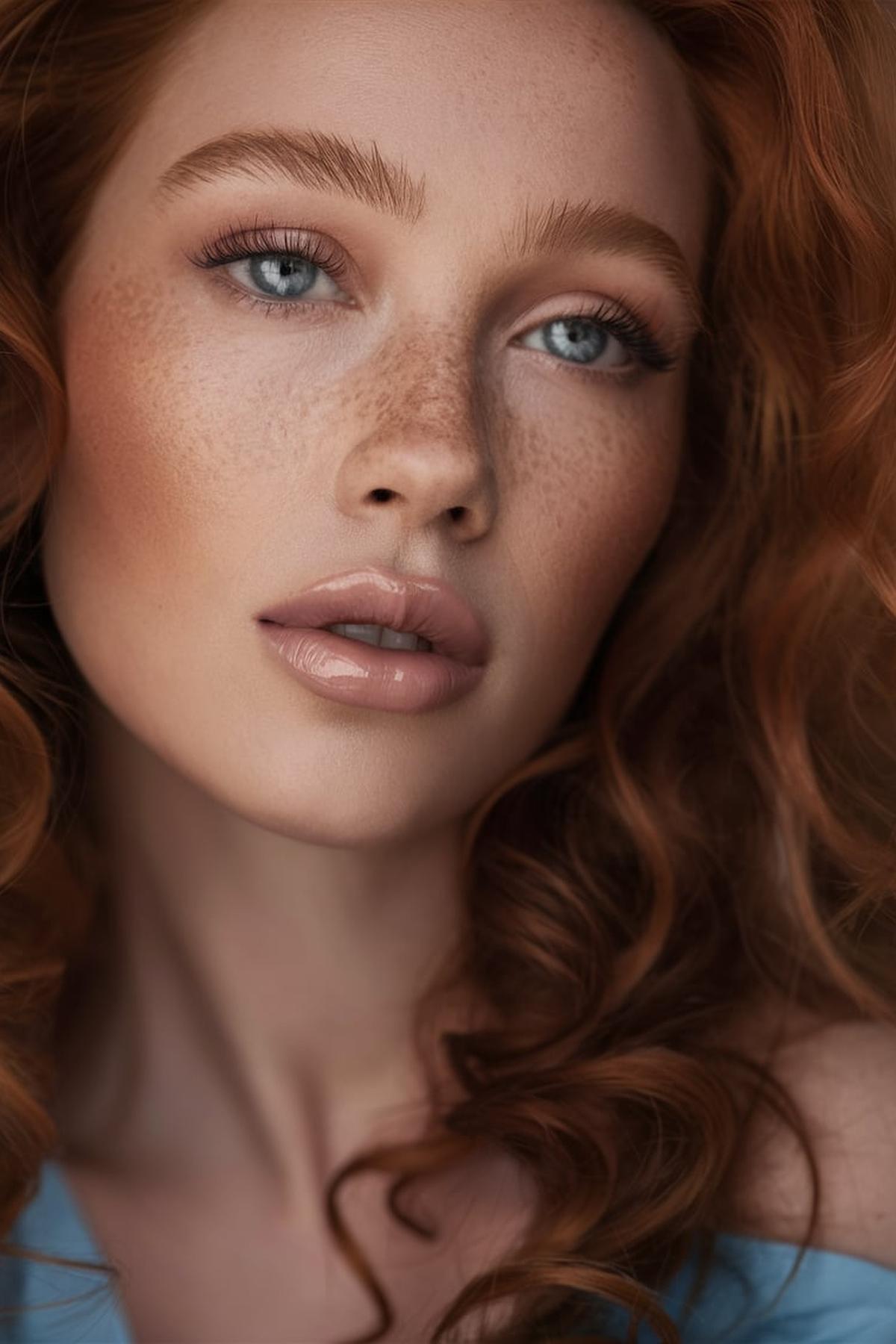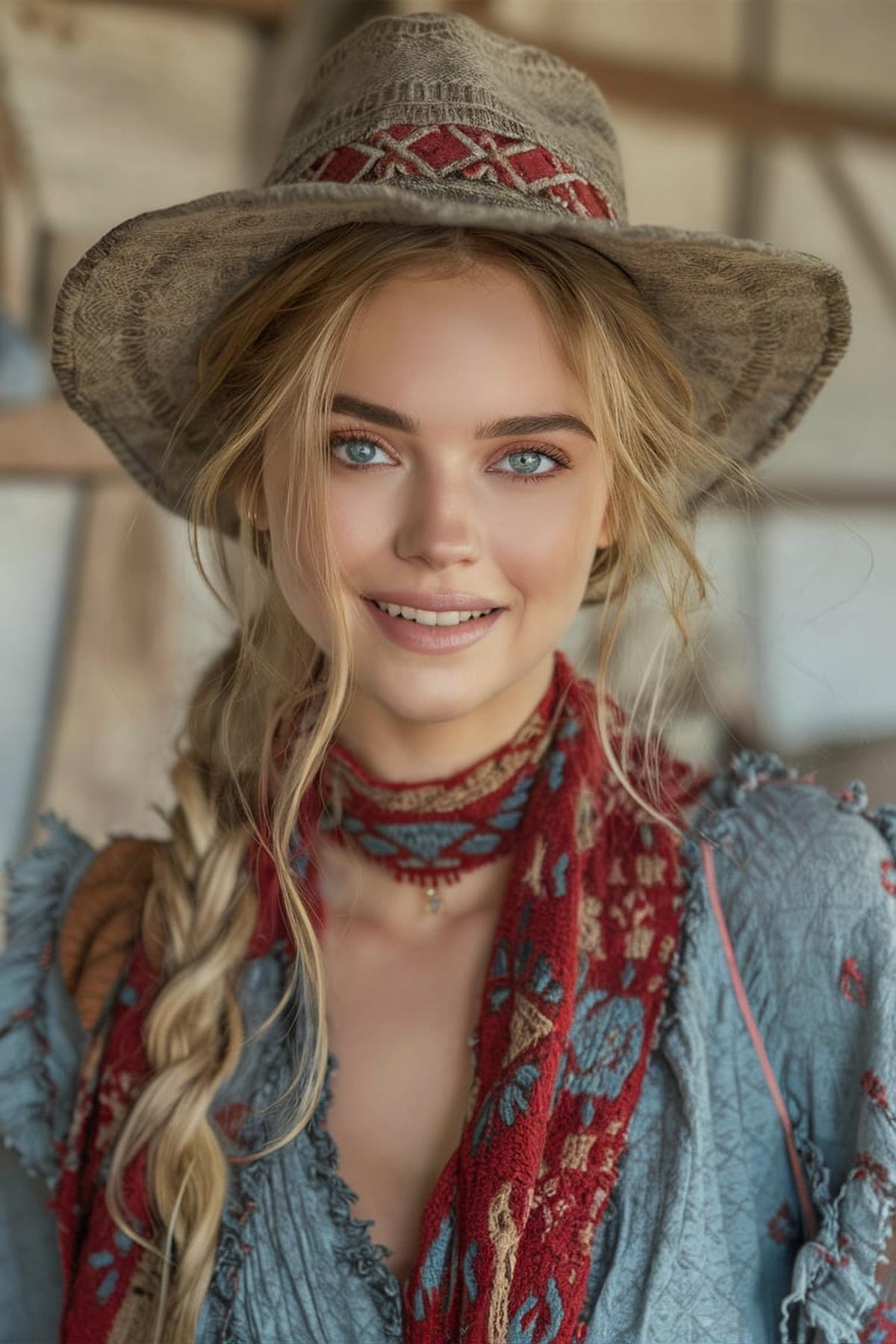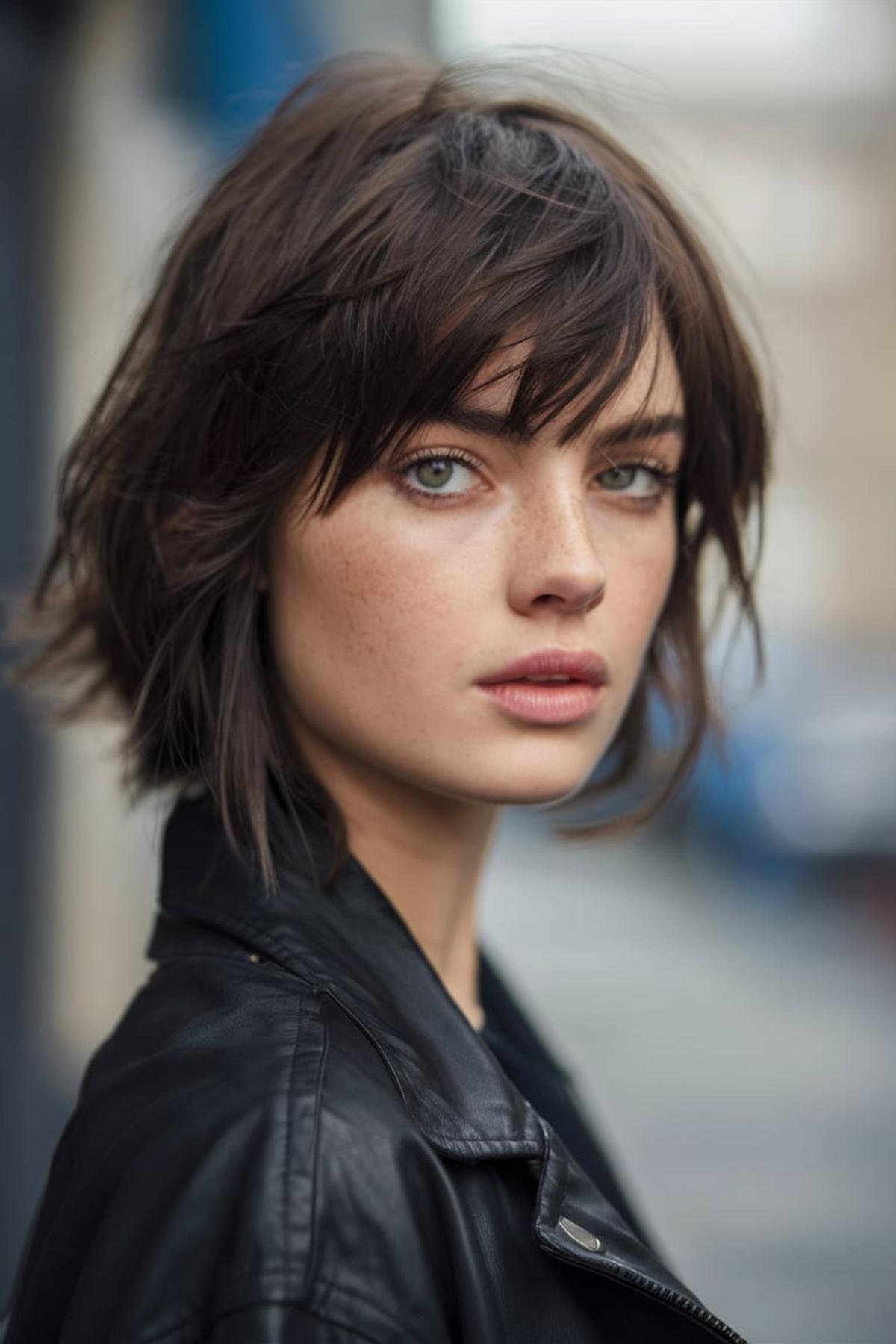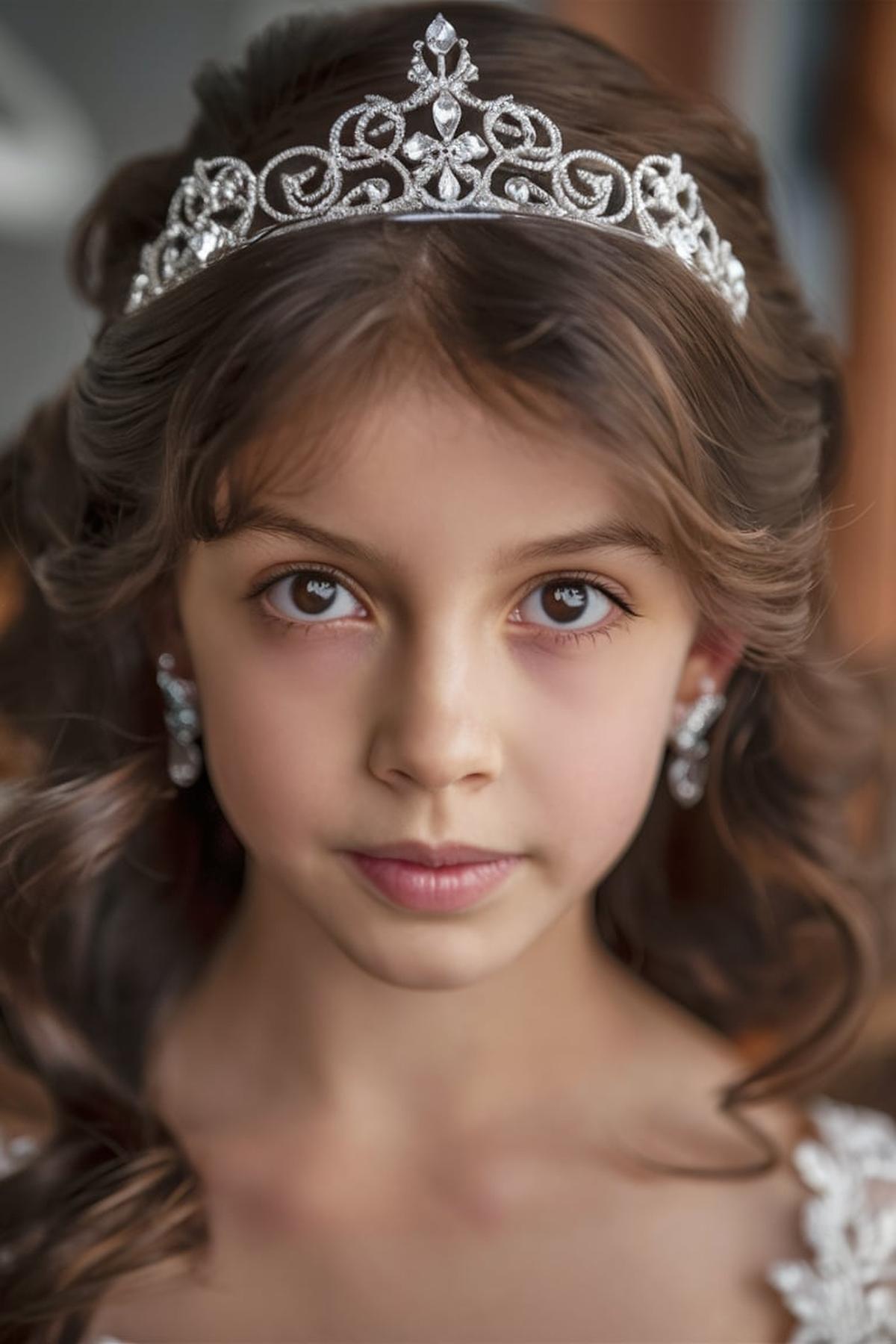Styles like box braids, cornrows, and Senegalese twists help protect natural hair texture from damage while celebrating African heritage.
Popular options like knotless braids, goddess locs, and Bantu knots can be customized for different occasions and hair lengths.
This promotes hair growth and strength when done properly.
Now, without further ado, let’s dive into 20 protective hairstyles and braids for every occasion.
Box Braids
This style is not only trendy but also serves as a protective hairstyle, helping to keep your natural hair healthy by reducing damage from daily styling and environmental factors. Box braids can be customized in various sizes and lengths, allowing you to express your unique style.
When sectioning your hair, try to make the parts as even as possible, which will help your braids look neat and uniform. You can choose from different sizes of braids—small, medium, or large—depending on the look you want.
You can wear them in a high ponytail, create a chic bob by trimming the ends, or let them hang loose for a more relaxed vibe. Experiment with different styles like buns, twists, or even adding colorful accessories to your braids. The versatility of box braids means you can easily switch up your look for any occasion, making them a great choice for anyone wanting to master their hairstyle.
Cornrows
To start mastering cornrows, it’s essential to prepare your hair by washing and conditioning it to keep it healthy and moisturized. Products like shampoos and conditioners designed for hydration can help prevent your hair from becoming dry and brittle.
One mirror should be in front of you and the other behind you, allowing you to see the back of your head while you braid. Before you begin, section your hair into manageable parts and tie up the sections you aren’t working on.
Wrap the extension around your natural hair and divide it into three strands to begin the braid. Keep your tension even to make sure the cornrows look neat and uniform. With practice, you’ll get better at creating tight, clean braids that can last for weeks.
Knotless Braids
Unlike traditional box braids, knotless braids start with your natural hair being braided first, and then the extension hair is added in. This method makes the braids lay flat against your head, which not only looks more natural but also reduces tension on your hair and scalp, helping to prevent breakage and discomfort. To master knotless braids, start by preparing your hair.
Then, divide your hair into sections to make the braiding process easier. As you braid, add small pieces of extension hair gradually, which helps create a smooth and seamless look.
You can do this by using a silk scarf at night and applying leave-in conditioner to keep your hair moisturized. Knotless braids can last for several weeks, but it’s best to avoid keeping them in for more than 8-10 weeks to prevent damage. With a little patience and care, you can rock beautiful knotless braids that enhance your style!
Senegalese Twists
This style involves twisting two strands of hair together, often with added hair extensions, to create a beautiful rope-like appearance. Senegalese twists are especially popular for their protective qualities, helping to shield natural hair from damage while allowing it to grow strong and healthy underneath.
When twisting, take your time to ensure that each twist is tight and consistent from the roots to the ends. This will help your twists look neat and last longer.
You can wear them down, create updos, or even accessorize with beads and colorful ties. To keep your twists looking fresh, remember to re-twist your roots every 2-4 weeks and keep them moisturized. With proper care, Senegalese twists can last for several weeks, giving you a stylish look without needing daily styling.
Goddess Locs
This style is versatile and can be worn for various occasions, making it popular among many people. To master goddess locs, it’s essential to understand the techniques involved in creating and maintaining them.
It’s crucial to ensure that the locs are not too tight to avoid damaging your natural hair. Additionally, using a good moisturizing product can help keep the locs looking fresh and healthy.
This personal touch can make your hairstyle stand out even more. Watching tutorials or learning from experienced stylists can also provide helpful tips and tricks to perfect your goddess locs technique.
Fulani Braids
They typically feature cornrows at the top and individual braids at the back, allowing for various styles, including twists and knotless braids. To master this look, it’s important to practice and find the right technique that works for you.
Once you have the sections ready, you can start braiding, keeping the tension consistent to avoid pulling too tightly on your scalp. Watching tutorials can also help you learn different braiding techniques and styles.
You can also accessorize your braids with beads or colorful threads to add a personal touch. With practice and care, you can master Fulani braids and showcase your unique style!
Havana Twists
To start, you need to gather the right materials, including hair extensions that match your natural hair color and a good moisturizing product to keep your hair healthy. Before you begin, make sure your hair is clean and detangled, as this will make the twisting process easier and help the twists look neat.
Twist the two together, ensuring that you keep the tension even throughout the twist. This will help the twists stay in place and look uniform.
You can wear them down, pull them into a bun, or even accessorize with beads or scarves for a fun look. To keep your Havana twists looking fresh, make sure to moisturize them regularly and protect them at night by wrapping your hair in a silk scarf or using a satin pillowcase. This will help prevent frizz and keep your twists looking great for longer.
Passion Twists
They are lightweight and easy to maintain, making them a popular choice for those who want a stylish yet low-maintenance option. Passion twists can add volume and fullness to your natural hair while also protecting it from damage.
Next, take a section of your natural hair and attach the pre-looped end of the passion twist extension, making sure it’s secure. Repeat this process for all sections of your hair.
After you reach the ends, secure them with hair ties or dip them in hot water to prevent unraveling. Finish your look with a gel or leave-in conditioner for a polished appearance, and you’re ready to rock your passion twists!
Faux Locs
To start, you’ll need some hair extensions, which can be either synthetic or human hair. Make sure to gather all your supplies, including a comb, hair clips, and styling products, so you’re ready to go.
Then, take a piece of the extension and wrap it around your natural hair, securing it tightly. You can choose to twist or braid the extension for a more textured look.
Keep your scalp clean and moisturized, and avoid heavy products that can cause buildup. You can also protect your locs at night by wearing a silk scarf or using a satin pillowcase. With a little practice and care, you’ll master faux locs and rock this beautiful hairstyle with confidence!
Marley Twists
To master this style, start by gathering the right materials, including Marley hair extensions and some hair products to keep your natural hair moisturized. It’s important to section your hair properly and ensure that your natural hair is clean and well-conditioned before you begin twisting.
Braid the roots a few times to secure the twist, then split your hair into two sections and twist them around each other down to the ends. Make sure to keep the twists tight but not too tight to avoid pulling on your scalp, which can cause discomfort.
You can also experiment with different styles, like high ponytails or colorful highlights, to personalize your look. With practice, you’ll be able to create beautiful Marley twists that showcase your unique style.
Bantu Knots
To create Bantu knots, start by washing and conditioning your hair to keep it healthy. After that, section your damp hair into small parts, using a comb to make sure the parts are neat. The size of the sections will determine how tight or loose your knots will be.
Secure it with a hair tie or bobby pin. Make sure to twist all the sections in the same direction for a uniform look.
If you decide to take them out, you’ll get beautiful, defined curls. This hairstyle is not only eye-catching but also a protective style that helps keep your hair healthy. With a bit of practice, you can master Bantu knots and enjoy experimenting with different looks!
Flat Twists
To get started, you should prepare your hair by washing and conditioning it well. This helps ensure that your hair is clean and manageable. It’s best to work with slightly damp hair, especially if it’s curly, as this gives you better grip while twisting. Gather a few tools like a comb, clips, and your favorite styling product to help keep your twists neat and in place.
For beginners, it might be easier to start with larger sections. Once you have your section, split it into two parts and begin twisting them together. As you twist, you can add more hair from the section you’re working on, which helps the twist stay close to your scalp.
You can choose to twist all the way down or leave some loose ends for a different look. To keep your flat twists looking fresh, consider wrapping your hair at night with a silk scarf or bonnet. This helps prevent frizz and maintains moisture. With practice, you’ll be able to master flat twists and create a variety of stylish looks!
Halo Braid
To start, you need to section your hair and create a braid on one side, adding more hair as you go along. Once you reach the back of your head, you can secure the braid and wrap it around to create that halo effect.
At night, cover your braid with a satin or silk scarf to prevent frizz and keep it in shape. In the morning, you can lightly spritz it with water or a leave-in conditioner to refresh the look.
The less you fiddle with it, the longer it will stay looking neat and pretty. If it’s windy or you’re worried about it getting messy, consider wearing a stylish headband or scarf to keep everything in place. With a little practice, mastering the halo braid will be easy and fun!
Crochet Braids
This method allows for a variety of styles and textures while protecting your natural hair underneath. To master crochet braids, it’s important to start with clean, well-prepped hair and choose the right type of hair extensions that match your desired look.
The tighter and neater your base, the better the crochet braids will look. Once your base is ready, use a crochet hook to pull the hair extensions through the braids, ensuring they are evenly spaced for a natural appearance.
Remember to take care of your crochet braids by moisturizing your scalp and the extensions to keep them looking fresh. With practice, you can master crochet braids and create stunning hairstyles that enhance your look.
Twist Outs
To start, you need to wash and condition your hair properly. Begin by detangling your hair before washing to reduce knots. Use a good shampoo to clean your scalp, then follow up with a hydrating conditioner to keep your hair moisturized.
Divide your hair into sections and apply a styling product, like curl cream or mousse, to ensure your twists hold well. For each section, twist the hair tightly from the roots to the ends. If you want to reduce frizz, you can use a brush to smooth the hair as you twist.
To avoid frizz, use a little oil on your fingers while separating the twists. You can fluff your hair for more volume or leave it as is for a more defined look. Remember to protect your twists at night by wearing a satin cap or scarf to keep your style fresh longer.
Pineapple Updo
To create this look, start by gathering your hair into a high ponytail on the top of your head. You can use your hands to smooth your hair upward and then secure it with a hair tie.
After securing your ponytail, you can fluff out your curls with your fingers to add volume. If you want a sleeker look, you can apply some hair gel at the base of your ponytail.
For example, you can leave some bangs out to frame your face or add accessories like a headband or scarf for a trendy touch. If your hair is shorter, you can create multiple smaller pineapples around your head. This method helps to keep your curls defined and prevents frizz, making it a versatile option for any occasion.
Braided Ponytail
To start, you need to gather your hair into a high ponytail and secure it with a hair tie. Make sure your hair is smooth and free of tangles for the best results.
Begin braiding by crossing the left section over the middle, then the right section over the new middle. Continue this pattern until you reach the end of your hair.
Finally, secure the end of your braid with a small hair tie. You can finish off the look by trimming any uneven ends and applying some hair gel to blend your natural hair with the braid. This braided ponytail is not only cute but also a great way to protect your hair while looking fabulous!
Side Braids
To start, it’s best to work with slightly messy or textured hair, which helps the braid hold better. Begin by picking three sections of hair: two from the front and one from the back. This will be the base for your braid.
Keep directing the braid to one side as you go down. Once you reach the nape of your neck, finish the braid and secure it with a small clear elastic.
You can also use bobby pins to secure any shorter pieces of hair that might fall out. Finally, pull out a few strands around your face to give it a softer, more relaxed vibe. With a little practice, you’ll master the side braid and can style it however you like!
Two-Strand Twists
To create two-strand twists, you take two sections of hair and wrap them around each other from the roots to the ends. This style not only protects your hair but also keeps it moisturized, making it a great choice for anyone with natural hair.
Using some edge control can help keep your roots looking neat. Begin twisting by taking two strands of hair and wrapping them around each other.
You can also add beads or other accessories for extra flair. When you’re ready to take them out, you’ll have a beautiful twist-out style that gives your hair a whole new look. With practice, you’ll get better at making your twists look neat and defined!
Butterfly Locs
To master this style, start by preparing your natural hair. Make sure it’s clean and moisturized to ensure the locs look their best and to protect your hair underneath. Gather all the materials you’ll need, such as hair extensions, a comb, and hair clips, so you can work efficiently.
For that signature butterfly look, wrap the hair tightly at the roots and then more loosely as you go down. This technique creates the relaxed, fluffy appearance that makes butterfly locs so appealing.
You can wear them down, in a ponytail, or even in cute updos. Experiment with accessories like beads or hair wraps to add a personal touch. Maintaining your locs is also important, so keep them moisturized and clean to ensure they last longer and look fabulous.
Q&As for protective hairstyles and braids
Q: What are protective hairstyles and why are they important?
A: Protective hairstyles are ways of styling hair that minimize damage and breakage. They’re important because they help keep hair healthy, promote growth, and celebrate Black cultural heritage.
Q: How do box braids protect your hair?
A: Box braids protect your hair by keeping it tucked away and reducing daily manipulation. This helps prevent breakage and allows your natural hair to grow without stress.
Q: What’s the difference between regular braids and knotless braids?
A: Regular braids start with a knot at the scalp, while knotless braids begin with your own hair and gradually add extensions. Knotless braids put less tension on your scalp and can be more comfortable.
Q: How long can you keep protective styles like Senegalese twists in?
A: Senegalese twists can typically be kept in for 6-8 weeks. However, it’s important to listen to your hair and scalp. If you experience itching or buildup, it might be time to take them out sooner.
Q: What’s the cultural significance of Fulani braids?
A: Fulani braids originate from the Fulani people of West Africa. They’re not just a hairstyle, but a way to express cultural identity and heritage. These braids often feature unique patterns and sometimes include beads or cowrie shells.
